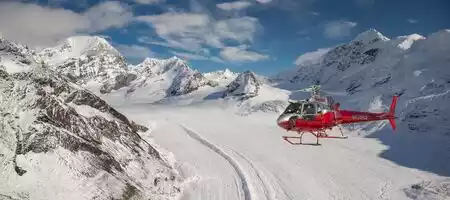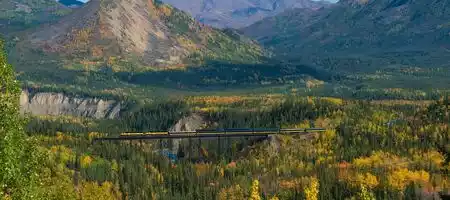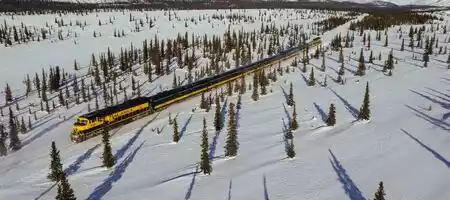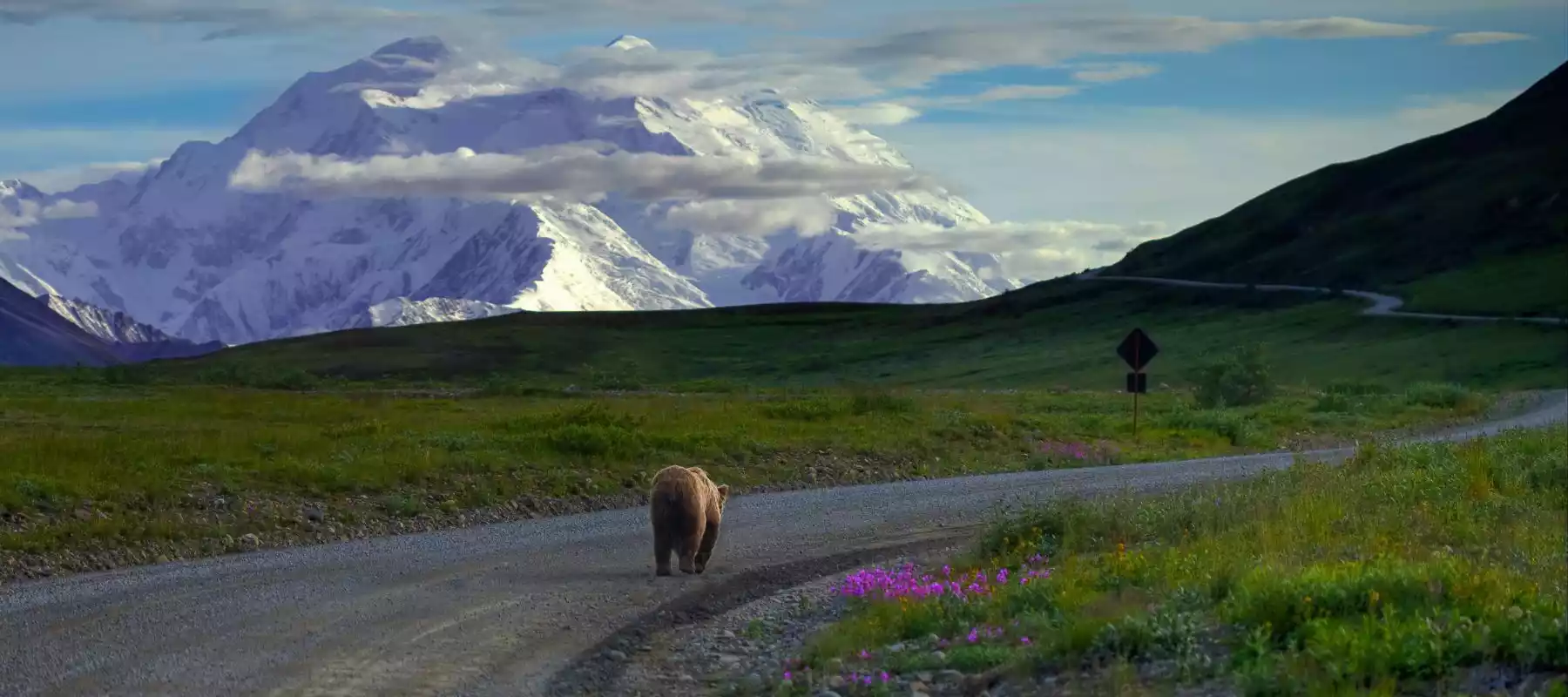
Last updated: July 9, 2025
Animals roam free in Alaska's wild lands. From alpine mountain ridges to deep, plunging fjords, by choosing Alaska, you choose nature's domain.
The best Alaskan wildlife to see on your trip to Alaska depends on your interests. While most popular to see include the 'big five' and whales, the landscapes contain everything from the mighty bison to the adorable pika.
In Short
- In Alaska, the most popular and common wildlife to see are the 'big five' — bears, moose, caribou, Dall sheep, and wolves — along with marine wildlife like whales, sea lions, and sea otters.
- The best place to see wildlife is on Alaska land tours that visit national parks or conservation centers
- For a vacation focused entirely on Alaskan wildlife viewing, visiting a remote wilderness lodge offers daily excursions by plane or boat to see wildlife living far from regular human traffic
This is our ultimate guide to seeing wildlife in Alaska. While all animal sightings are somewhat unpredictable, when booking a trip with Alaska Rail Vacations, we can tailor your journey to put you in the right place, at the right time, for your dream experience. And if you’re still looking for Alaska vacation ideas, we can help with that, too.
While viewing wildlife in Alaska, be sure to practice wildlife safety. Do not approach or feed animals you encounter. If you plan on venturing into the wilderness without a guide, purchase bear spray — best done once you arrive in Alaska, as it is prohibited on most commercial planes — and ensure it is easily accessible from the outside of your pack or bag.
What are Alaska's 'Big Five' Wildlife
Alaska is known for its 'big five' animals: bears, moose, caribou, Dall sheep, and wolves. All can be found wandering wild in the state, but mostly inhabit different regions, elevations, and seasons.
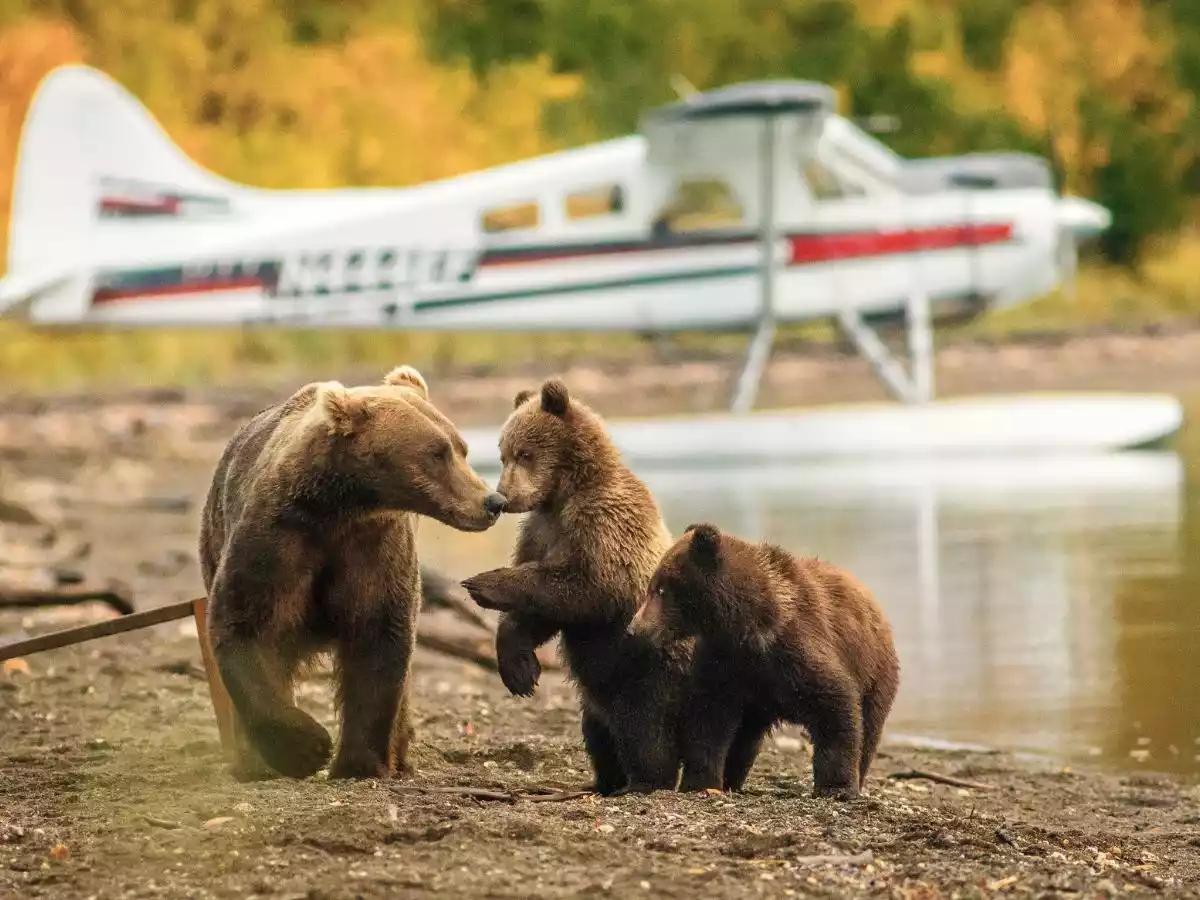 A flightseeing tour from Stillpoint Lodge | Credit: Stillpoint Lodge
A flightseeing tour from Stillpoint Lodge | Credit: Stillpoint Lodge
Bears
While bears only take one spot on the 'big five' list, there are three main kinds of bears that visitors can expect to see: brown bears, grizzlies, and black bears. Grizzly and brown bears, while often thought to be the same animal, are closely related subspecies that are found in different areas of Alaska. And, while polar bears do live in Alaska, they are typically too far north to be encountered by travelers. They are better viewed in Canada, and our partner brand, Canada By Design, can help you there.
Bear viewing is one of the best Alaska excursions, and one that we recommend to all of our travelers as a part of their wildlife viewing trips. To see bears in Alaska, we recommend travelling between May and September to avoid the hibernation months.
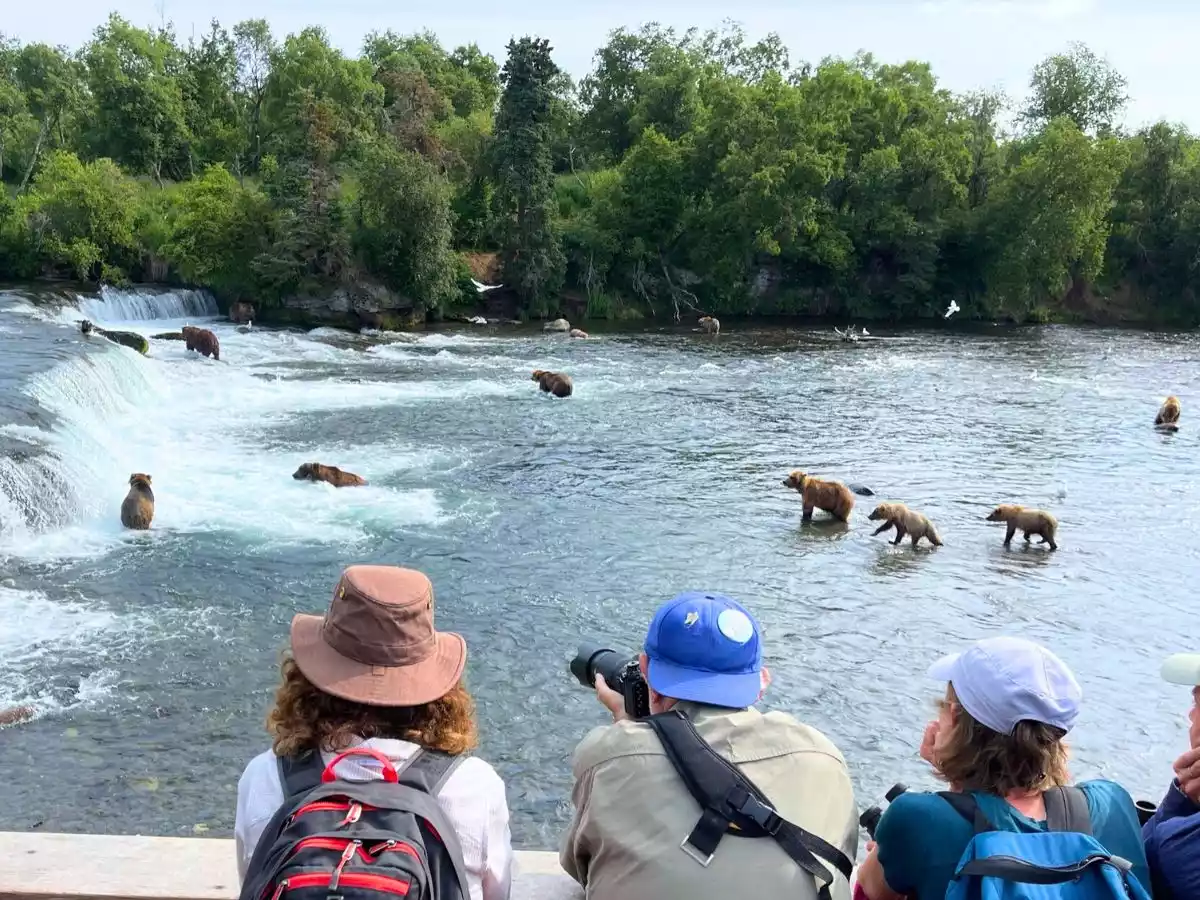
Ten bears congregating at Brooks Falls on a tour from Stillpoint Lodge | Credit: Stillpoint Lodge
Seeing Brown Bears in Alaska
Coastal brown bears and Kodiak brown bears are the largest subspecies of bear — and the largest land carnivore on Earth — and live along coastal regions and on the Kodiak Islands.
Many of our itineraries include fly-in bear-viewing tours, which bring visitors from Anchorage to Katmai National Park. A popular place to see brown bears is at Brooks Falls, where they wait for salmon during the annual salmon run from July through September. This is the place for a once-in-a-lifetime view of numerous bears congregating at the falls to fish as they fatten up for the upcoming winter season.
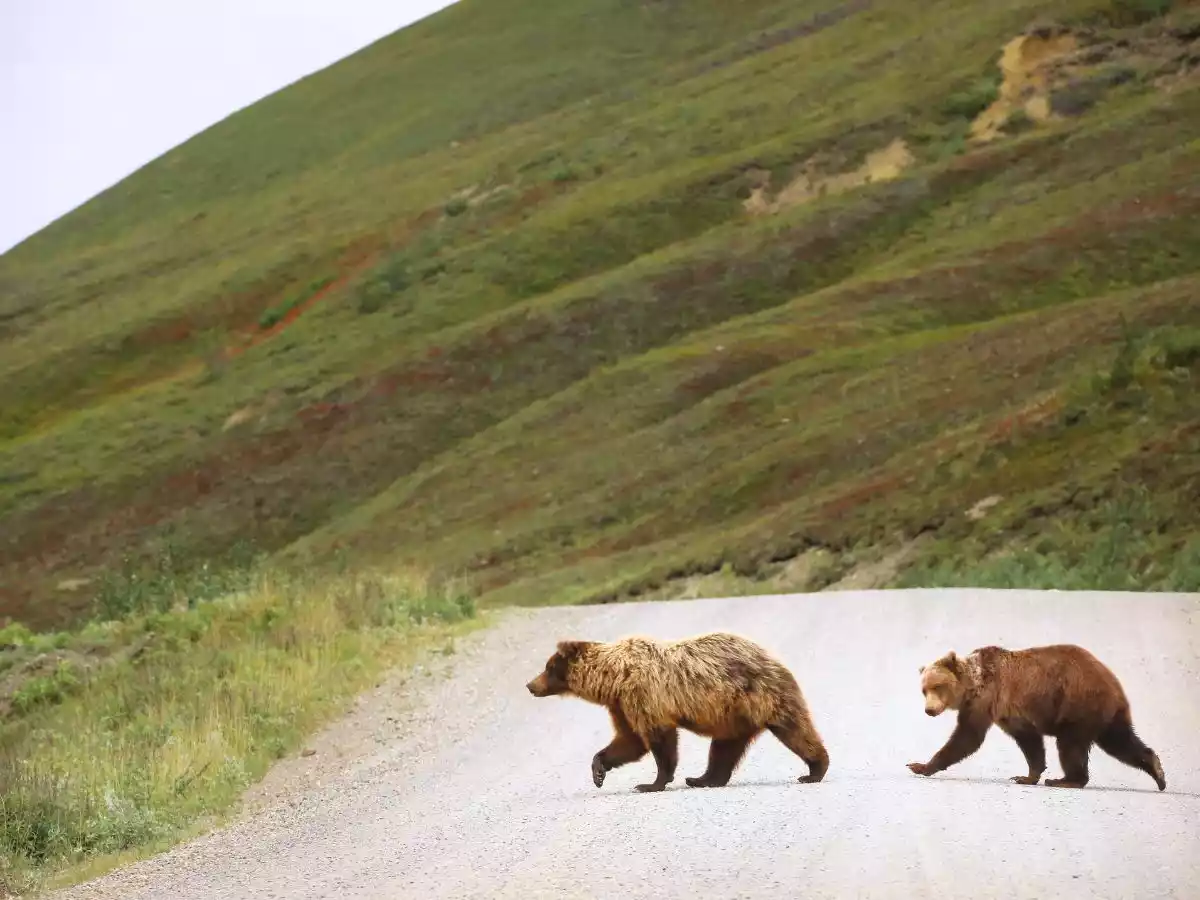 Two grizzlies crossing the Park Road in Denali National Park | Credit: NPS Photo / Emily Mesner
Two grizzlies crossing the Park Road in Denali National Park | Credit: NPS Photo / Emily Mesner
Seeing Grizzly Bears in Alaska
Grizzly bears live further inland than brown bears. They're often seen in Denali National Park and Preserve on guided tours along the Denali Park Road as they can venture beyond Mile 15 — the limit for where private vehicles are permitted — and therefore beyond the busiest areas of the park. They are best seen in the spring and summer months when they are not hibernating.
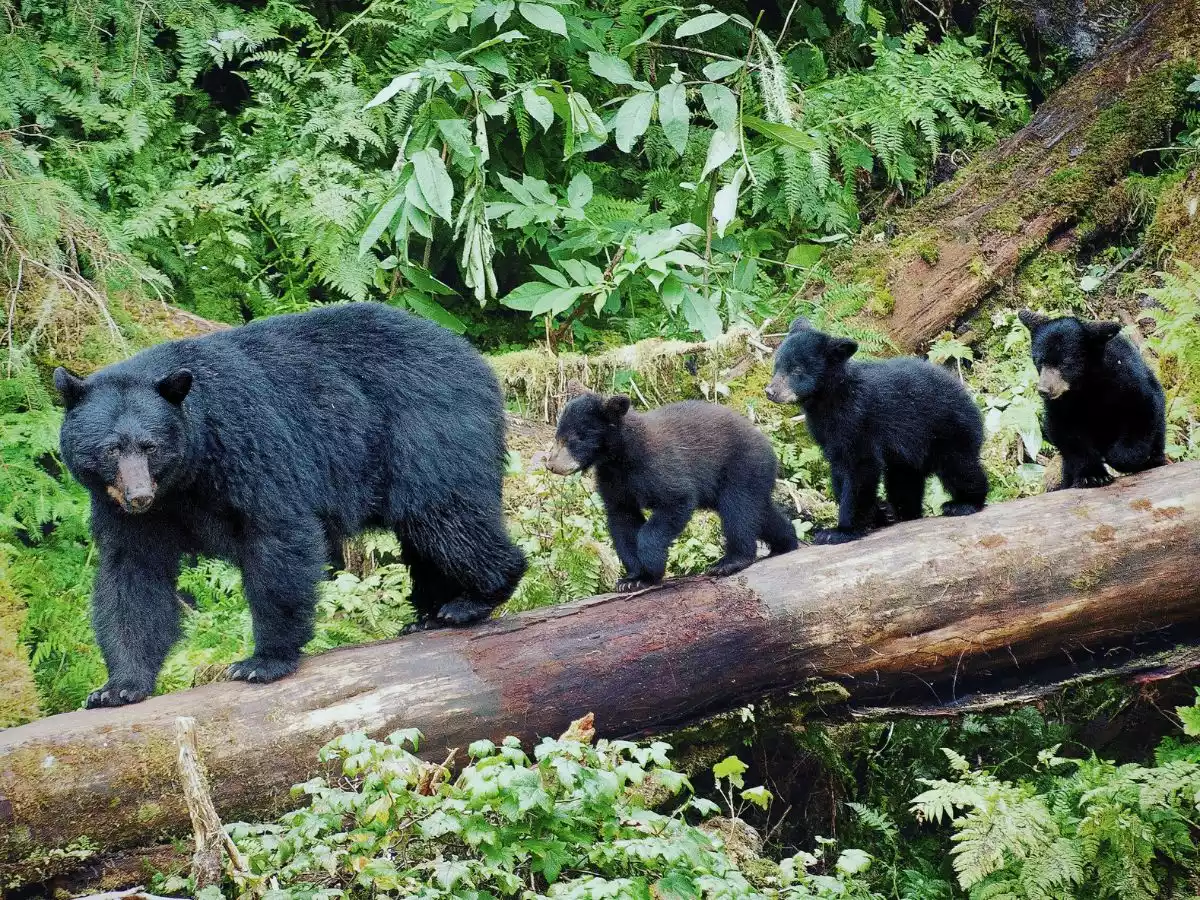 Black bears nearby Stillpoint Lodge | Credit: Stillpoint Lodge
Black bears nearby Stillpoint Lodge | Credit: Stillpoint Lodge
Seeing Black Bears in Alaska
Black bears live in most heavily forested areas of Alaska. However, notably, they are not found on the Seward Peninsula. Though they can be black or brown in color, especially in Southcentral Alaska or along the Inside Passage, they remain a distinct species from brown bears.
Black bears hibernate over winter - between October and April — so be sure to visit Alaska during the summer months to spot them.
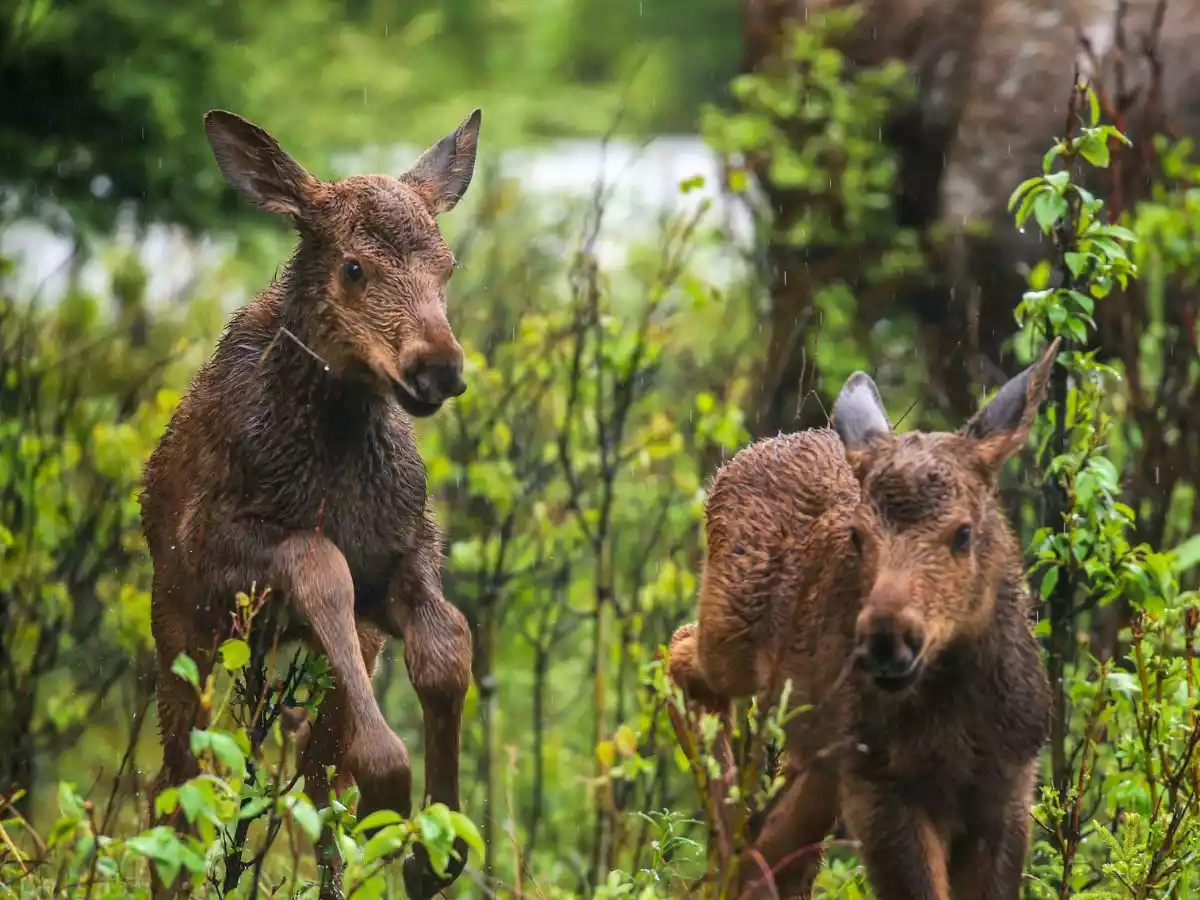 Moose calves in Denali National Park | Credit: NPS Photo / Emily Mesner
Moose calves in Denali National Park | Credit: NPS Photo / Emily Mesner
Moose
Moose can be seen across Alaska's wetlands, which make up over 40% of the state's land. But, as rather shy animals, they are best seen at either pole of the day — either at sunrise or at sunset — and in less busy areas.
A good place to see a moose in the wild is along the Denali Park Road in Denali National Park and Preserve. Visitors often spot moose within the first 15 miles of the road, where there is more forest and shrubbery than open tundra.
Another option is Kincaid Park, just 10 miles south of Anchorage and known among locals as a moose hotspot. Here, moose are known to wander the same trails as people do — 70 miles of which meander through the park. This is a great way to spend a free day in Anchorage and is best in September when bulls (males) begin their rut and become more outgoing.
For an up-close encounter, it is best to visit the Alaska Wildlife Conservation Center, where visitors can see the two moose that live and are cared for by the center. Pip and Jo, the two residents, were both rescued as calves and cannot be reintroduced to the wild. They can be seen happily wandering their pasture.
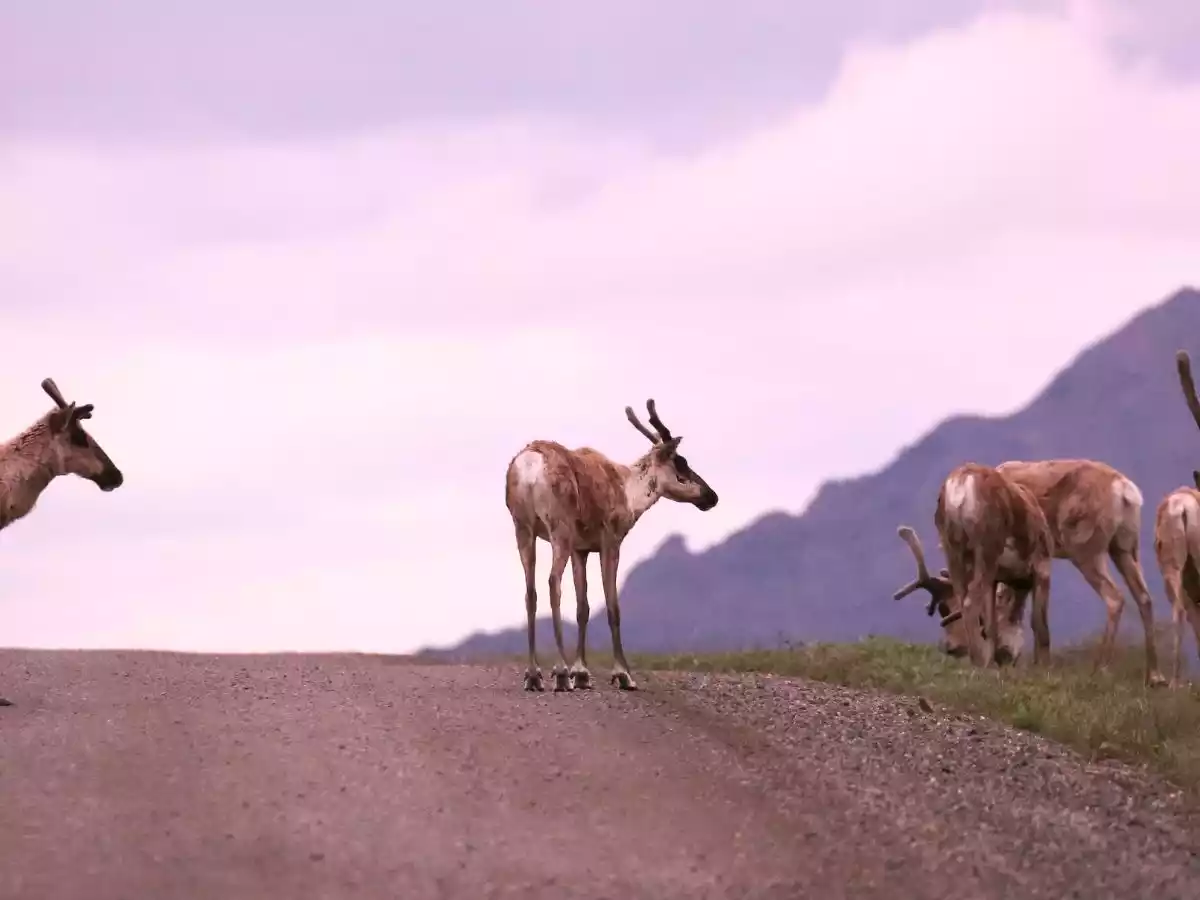 Caribou on the Denali Park Road | Credit: NPS Photo
Caribou on the Denali Park Road | Credit: NPS Photo
Caribou (and Reindeer)
Caribou and reindeer are the same species, though they differ slightly in appearance due to years of selective breeding. While Caribou are native to Alaska and are wild, reindeer in Alaska are domesticated livestock.
Around 750,000 caribou wander Alaska, and are commonly sighted along the Denali Park Road or the unpaved Denali Highway on 4x4 driving tours and guided tundra tours in Denali National Park and Preserve. This is especially true in early fall, when caribou begin migrating south for the winter.
If you want to see reindeer, our Alaska Scenic National Parks Road Trip passes by the town of North Pole, which is home to a very special herd. Here, you can visit the Antler Academy at Santa Claus House, and meet Father Christmas' own team of reindeer.
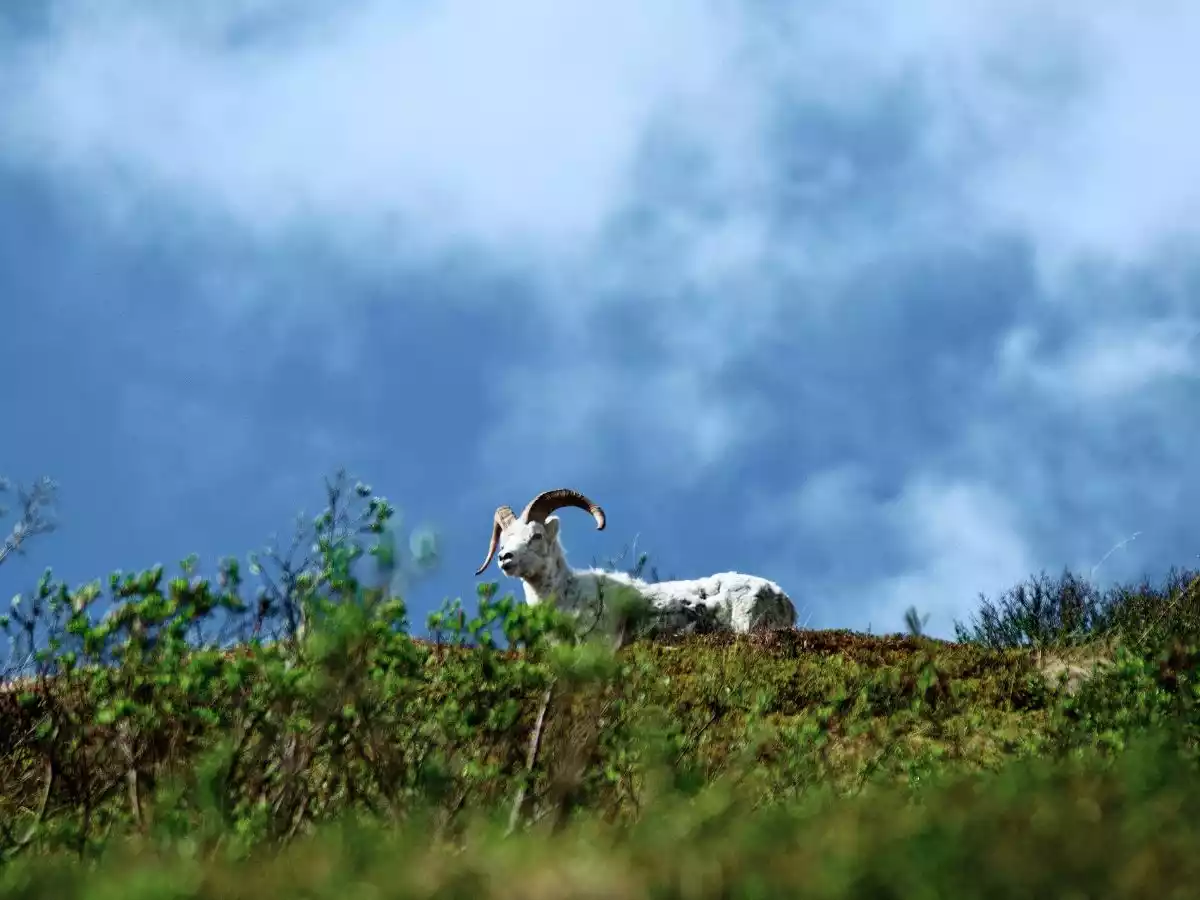 A Dall sheep overlooking the Denali Landscape | Credit: NPS Photo / Sean Proctor
A Dall sheep overlooking the Denali Landscape | Credit: NPS Photo / Sean Proctor
Dall Sheep
Dall sheep are found in Alaskan mountains as far south as the Kenai Peninsula and as far north as the Arctic, though they typically remain on dry, open alpine ridges.
This means the best way to see them is getting up into the mountains either on hikes or flightseeing and helicopter tours. We suggest a helicopter tour from Sweard to Bear Glacier. It's one of our favorites to offer to visitors, and regularly sees the wildlife that inhabits these more hard-to-reach spots.
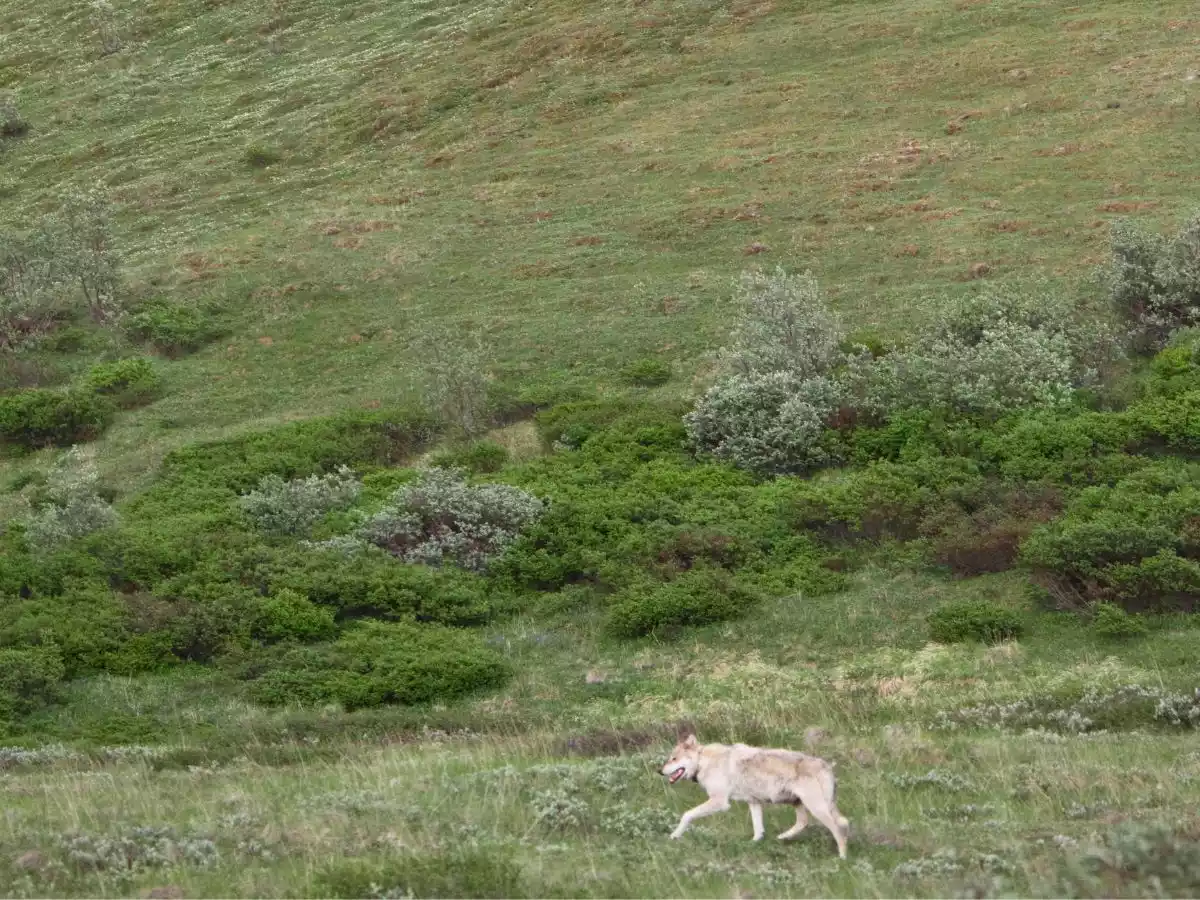 A wolf spotted in the park | Credit: NPS Photo
A wolf spotted in the park | Credit: NPS Photo
Wolves
Wolves wander around 85% of Alaska. But, while they're common across the state, they are the most elusive of the 'big five' species, and seeing one in the wild is rare.
Driving through Denali National Park and Preserve on a bus tour will give visitors the best opportunity to get lucky. The expansive wilderness and Denali Park Road's closure to private vehicles mean that humans are few and far between. And, from the bus tour, you gain views elevated above ground level, and many eyes working together to spot animals.
However, if you're visiting Alaska specifically to see wolves, the best place to go is the Alaska Wildlife Conservation Center. A small pack lives here as species ambassadors, helping to educate visitors and locals alike. This is the most reliable way to see a wolf in Alaska, even if it is not in the wild.
Other Wildlife to See in Alaska
Beyond the 'big five,' there are many iconic animals to see in Alaska, and some that fly under many visitors' radars.
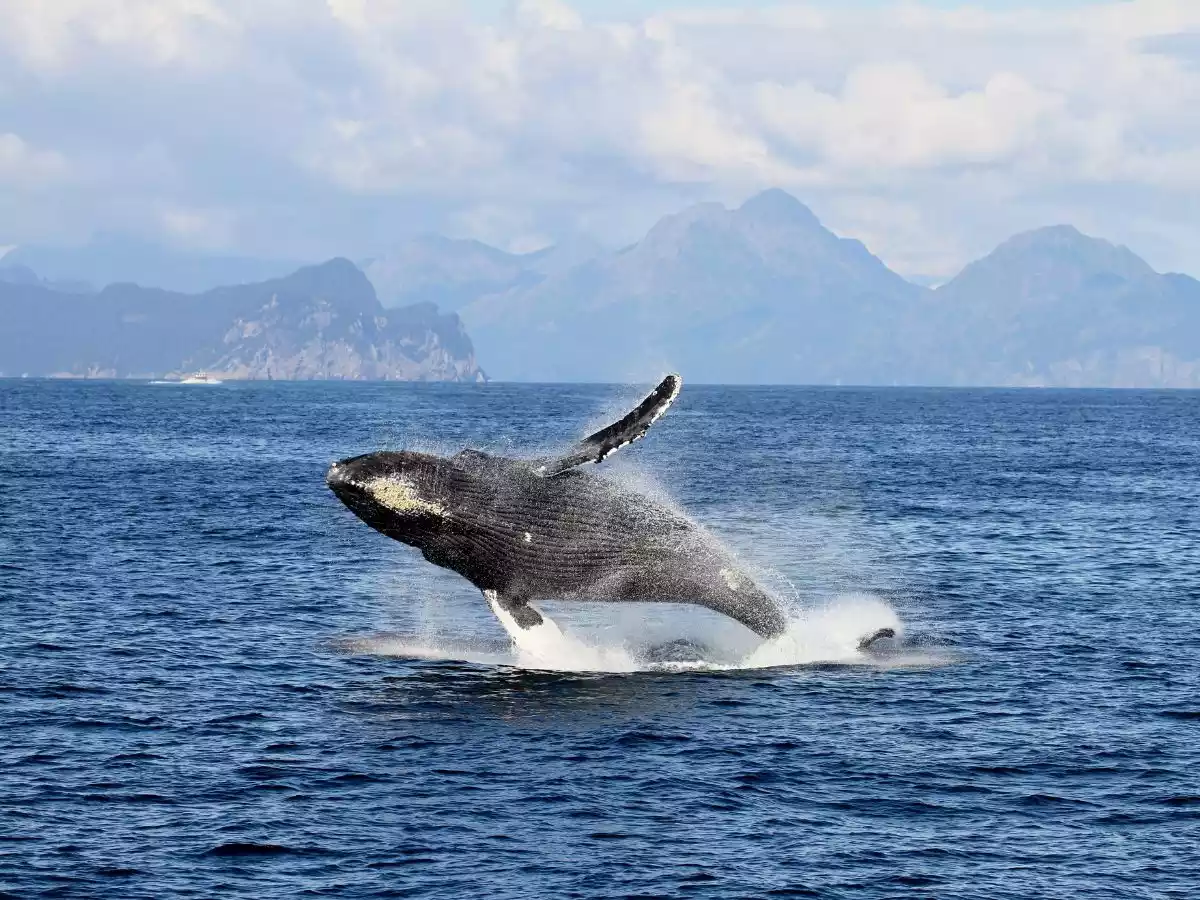 Humpback whale spotted from a Kenai Fjords tour | Credit: Kenai Fjords Tours
Humpback whale spotted from a Kenai Fjords tour | Credit: Kenai Fjords Tours
Whales
Whales are another highly sought-after animal to see in Alaska. Humpback whales, orcas (killer whales), gray whales, and fin whales all migrate through Alaskan waters, and can be seen from boat tours.
Other species of whale — like blue whales, belugas, and sperm whales — can be found along remote northern Alaska shores. However, these areas are tough for visitors to access.
Whales are best seen from small boats, rather than major cruise liners. We recommend day cruises that can visit tighter areas than larger vessels, and give a more intimate encounter with marine wildlife.
One of the best places for a whale-watching tour is in Kenai Fjords National Park. Day cruises take you through Resurrection Bay on a small catamaran. You'll be spotting marine wildlife and towering glaciers in equal measures along narrow, winding fjords. Our preferred tours are certified by Whale SENSE, which ensures they adhere to federal regulations established by the Marine Mammal Protection Act and the Endangered Species Act.
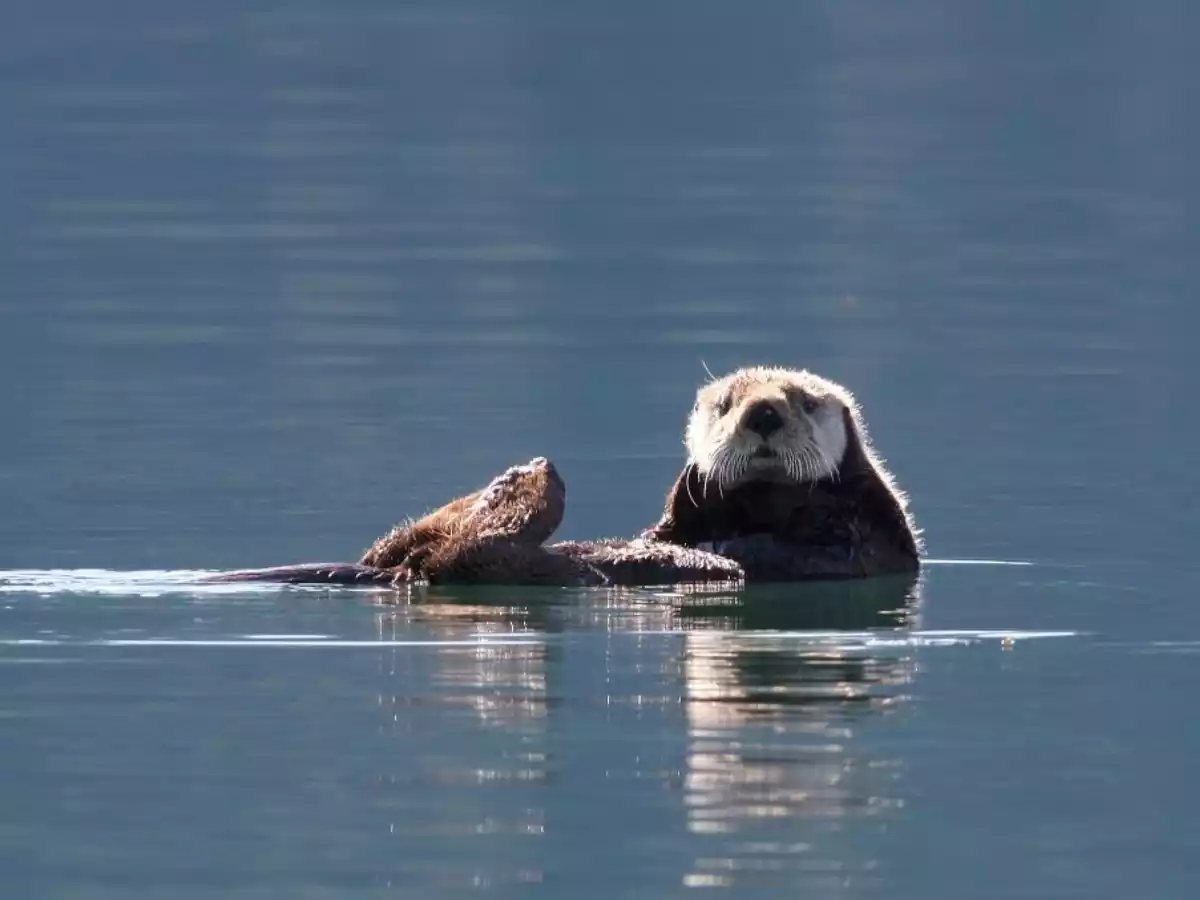 An otter floating in the fjord | Credit: NPS Photo / Jim Pfeiffenberger
An otter floating in the fjord | Credit: NPS Photo / Jim Pfeiffenberger
Sea Otters, Sea Lions, and Seals
Making up the rest of the must-see marine wildlife in Alaska, otters and sea lions can be found in abundance through Alaska's southern waters and in Resurrection Bay in Kenai Fjords National Park. Seals, on the other hand, are typically seen further north.
Boat tours, including the popular 26 Glaciers Tour, provide ample opportunity to get up close with the various animals living wild in the bay.
At the neighboring Alaska SeaLife Center in Seward, Stellar sea lions and harbor seals live in the nonprofit center. They contribute to ongoing research on marine wildlife while providing visitors a chance to see them.
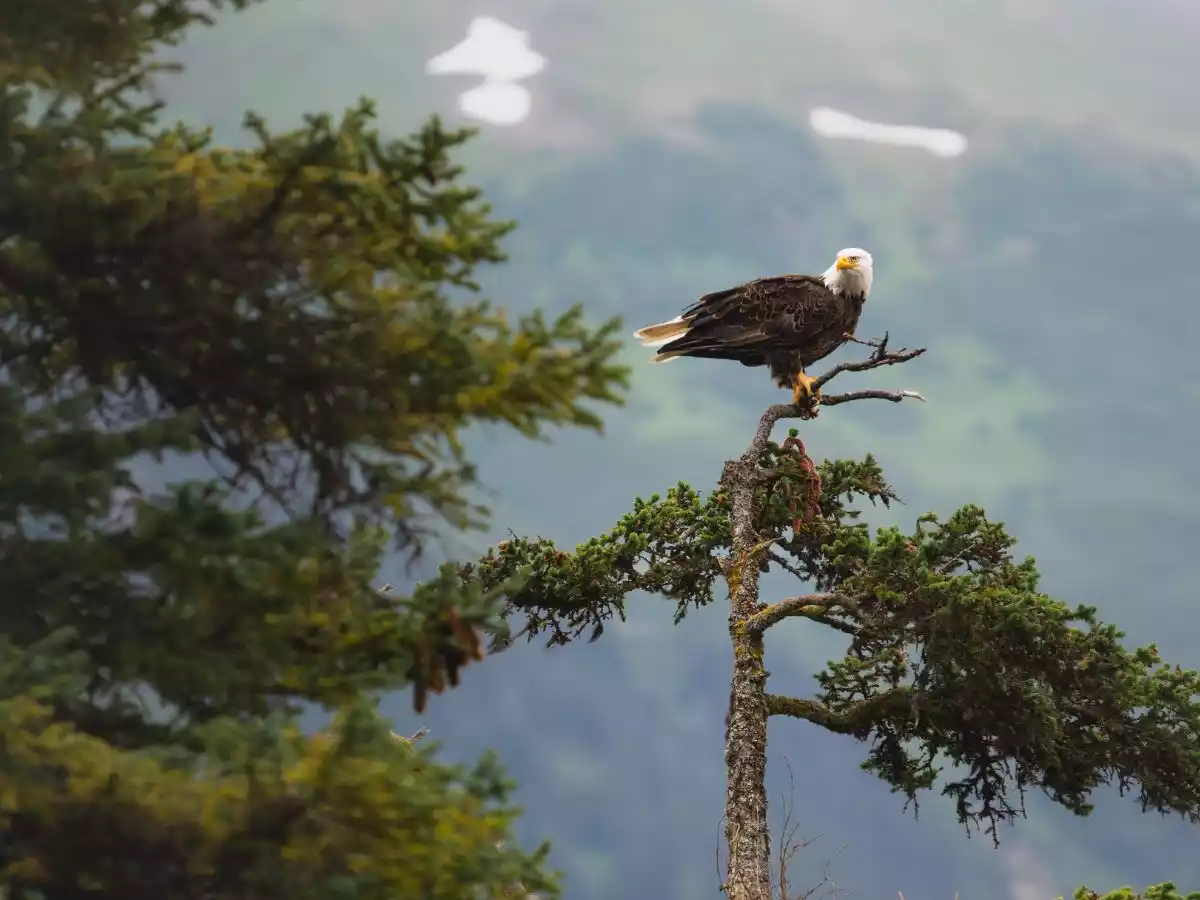 A bald eagle near Tutka Bay Lodge | Credit: Tutka Bay Lodge
A bald eagle near Tutka Bay Lodge | Credit: Tutka Bay Lodge
Bald Eagles and Birds
Bird watching in Alaska encompasses everything from bald eagles to tufted puffins to willow ptarmigans, and everywhere from the southernmost coast to the northern Arctic region. Bald eagles are mostly seen through the temperate rainforest that lines the coast, and are more abundant here than anywhere else in the United States. Puffins, too, are more plentiful here than in the Lower 48, and can be found in numerous coastal colonies along the Seward Peninsula.
Many of the best bird-watching opportunities in Alaska are found on boat cruises. These offer birders entry into the rich feeding grounds that many Alaskan birds rely on.
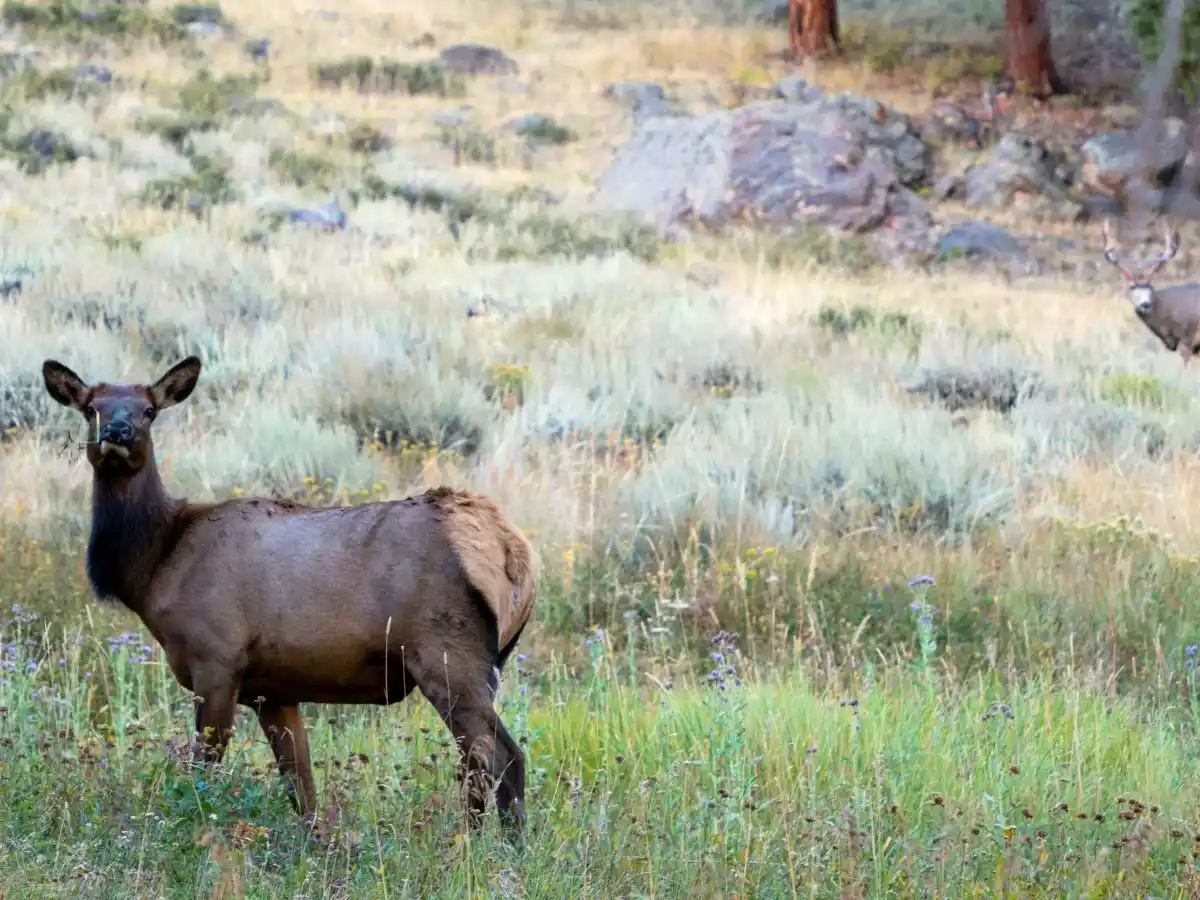 A Sitka mule deer | Credit: Brady Hood on Unsplash
A Sitka mule deer | Credit: Brady Hood on Unsplash
Deer and Elk
Sitka Blacktail Deer, a kind of mule deer, are the most common, found in Southeast Alaska along the Inside Passage. Visitors will likely see these deer throughout their trip as they wander by.
Elk, on the other hand, are much less common in Alaska. They are only found on four small islands along Alaska's southern coast. They are therefore not usually seen by visitors.
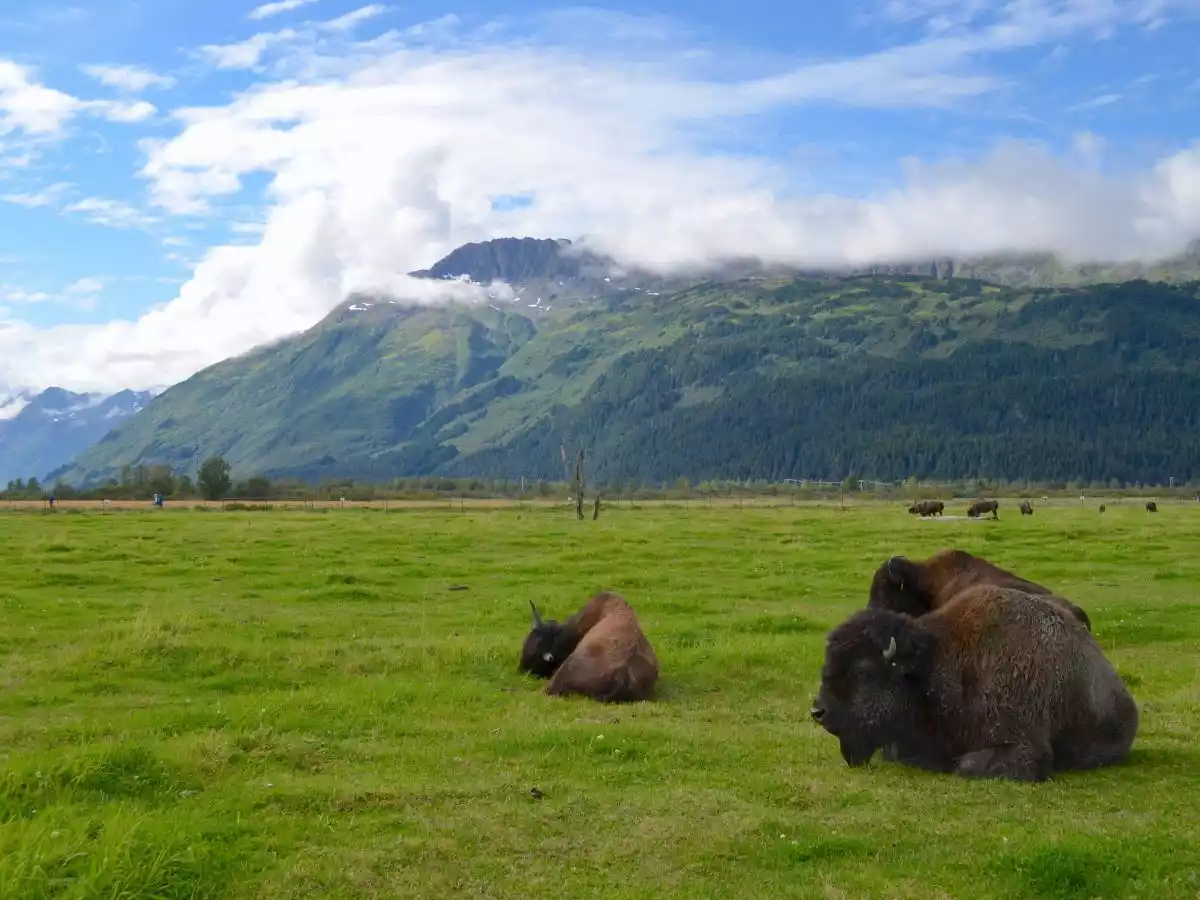 Wood Bison in the Alaska Wildlife Conservation Center | Credit: Ty Fiero on Unsplash
Wood Bison in the Alaska Wildlife Conservation Center | Credit: Ty Fiero on Unsplash
Bison
Two subspecies of Bison are found in Alaska, though neither is frequently seen in the wild by visitors.
Plains bison are found in the Delta Junction Bison Range, just east of Delta Junction itself. Wood bison's range encompasses a remote eastern pocket of Alaska near the community of Shageluk along the Innoko River, far beyond where roads go.
The Alaska Wildlife Conservation Center is home to the only captive herd of wood bison in the United States, where visitors are able to see them up close. Wood bison are the largest land animal in the Western Hemisphere and were once thought to be extinct. It is only through the hard work of wildlife conservationists that their numbers have begun to grow again.
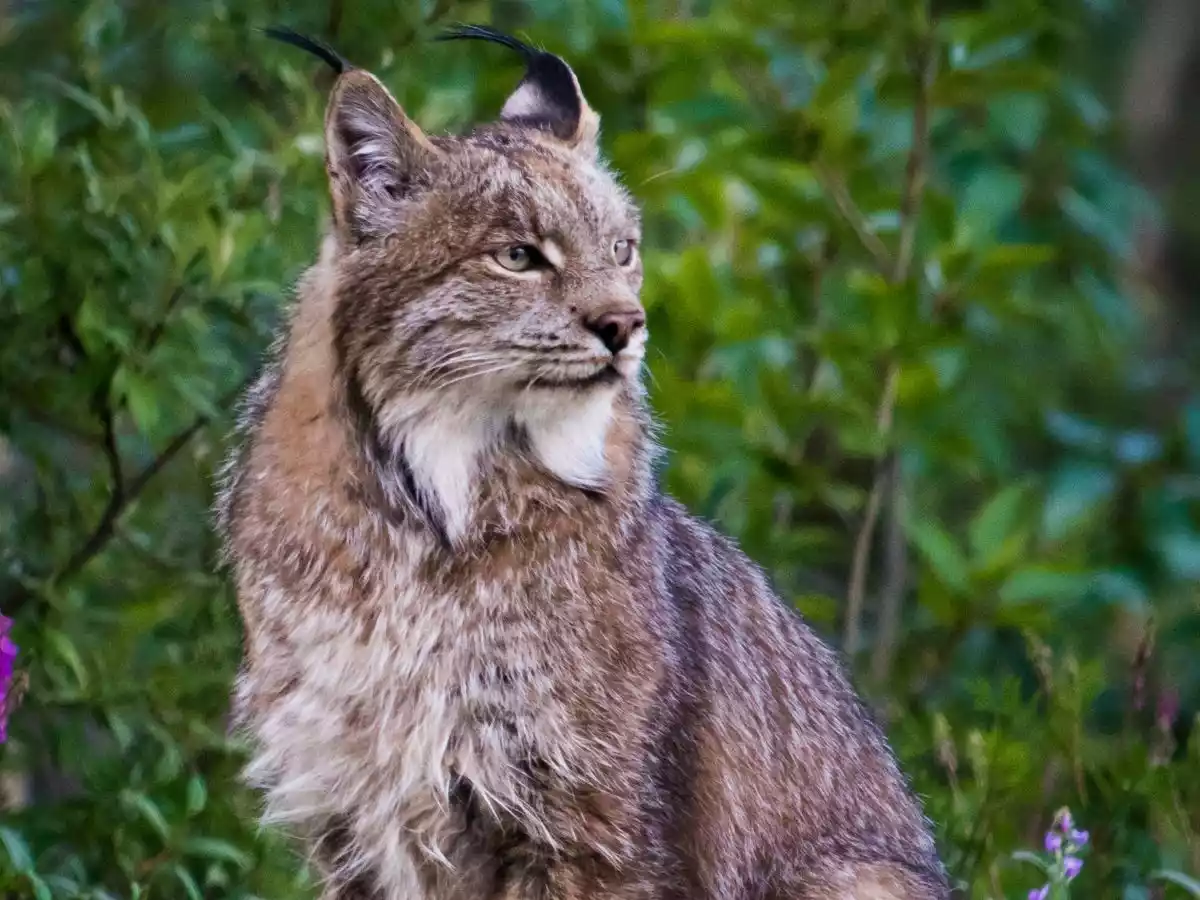 A close-up of a lynx in Denali National Park | Credit: NPS Photo / Emily Mesner
A close-up of a lynx in Denali National Park | Credit: NPS Photo / Emily Mesner
Lynx
Seeing a lynx in the wild is overwhelmingly rare, but possible in most places north of the Inside Passage. They live in forested areas, following the natural movements of their main prey: snowshoe hares.
If you're hoping to see a lynx, though, the Alaska Wildlife Conservation Center is home to two. Chena and Calvin were both brought to the center as cubs and, as they cannot be returned to the wild, now live their lives as species ambassadors.
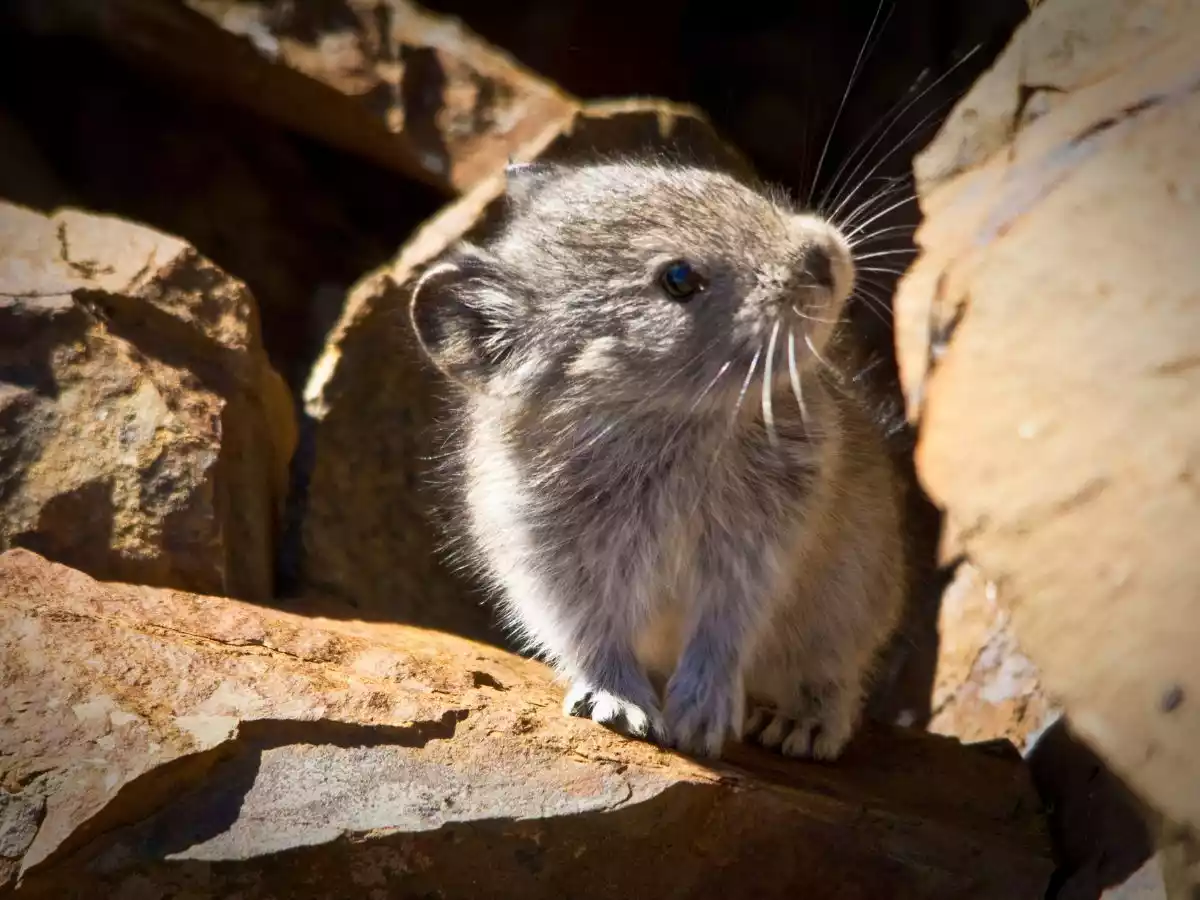 A little pika in Denali | Credit: NPS Photo
A little pika in Denali | Credit: NPS Photo
Small Mammals
All manner of small critters inhabit Alaska. While they are often not the primary factor driving animal enthusiasts to visit the state, they are a vital part of the rich ecosystem that makes up Alaska. Red squirrels, snowshoe hares, marmots, pika, Arctic ground squirrels, and beavers are all common across the state, and you will likely encounter at least one during your trip.
The best way to see these animals is by keeping your eyes peeled along hiking trails:
- Forests — red squirrels, snowshoe hares
- Mountains — marmots, pika, Arctic ground squirrels
- Ponds and rivers — beavers
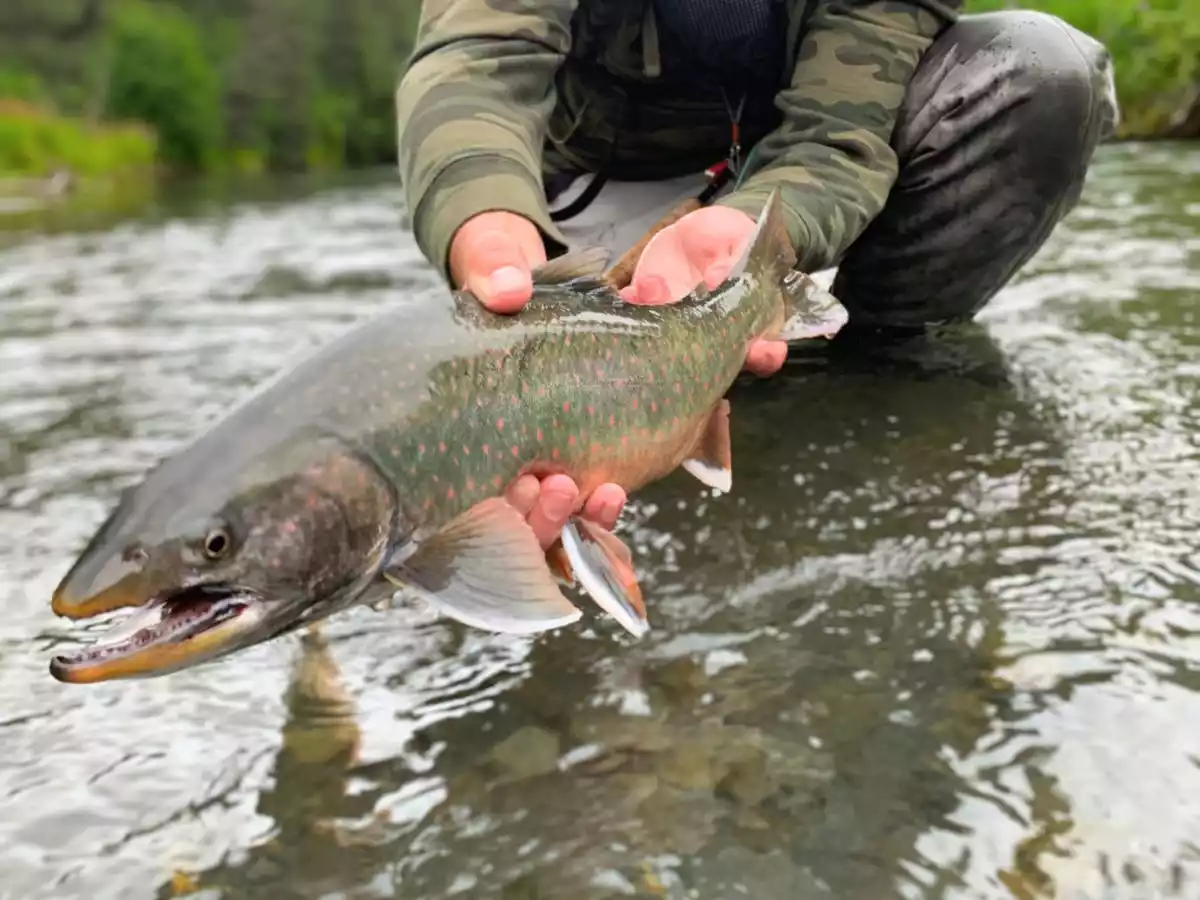 A Dolly Varden caught on the Kenai River | Credit: Kenai River Drifter’s Lodge
A Dolly Varden caught on the Kenai River | Credit: Kenai River Drifter’s Lodge
Fish
The pure abundance of salmon and trout in Alaska draws visitors from across the world. While not the subjects of wildlife viewing, recreational fishing opportunities — both freshwater and deep-sea — across the state are unmatched.
Visitors looking to fish should head to the Kenai River, which is famous for its salmon runs, and many fishing lodges line the shores. Or, visit the coasts of the Southcentral region for unmatched deep-sea fishing opportunities offered by the wilderness lodges found there.
Best Places to See Wildlife in Alaska
Across Alaska, certain destinations stand above the rest for seeing wildlife in their element.
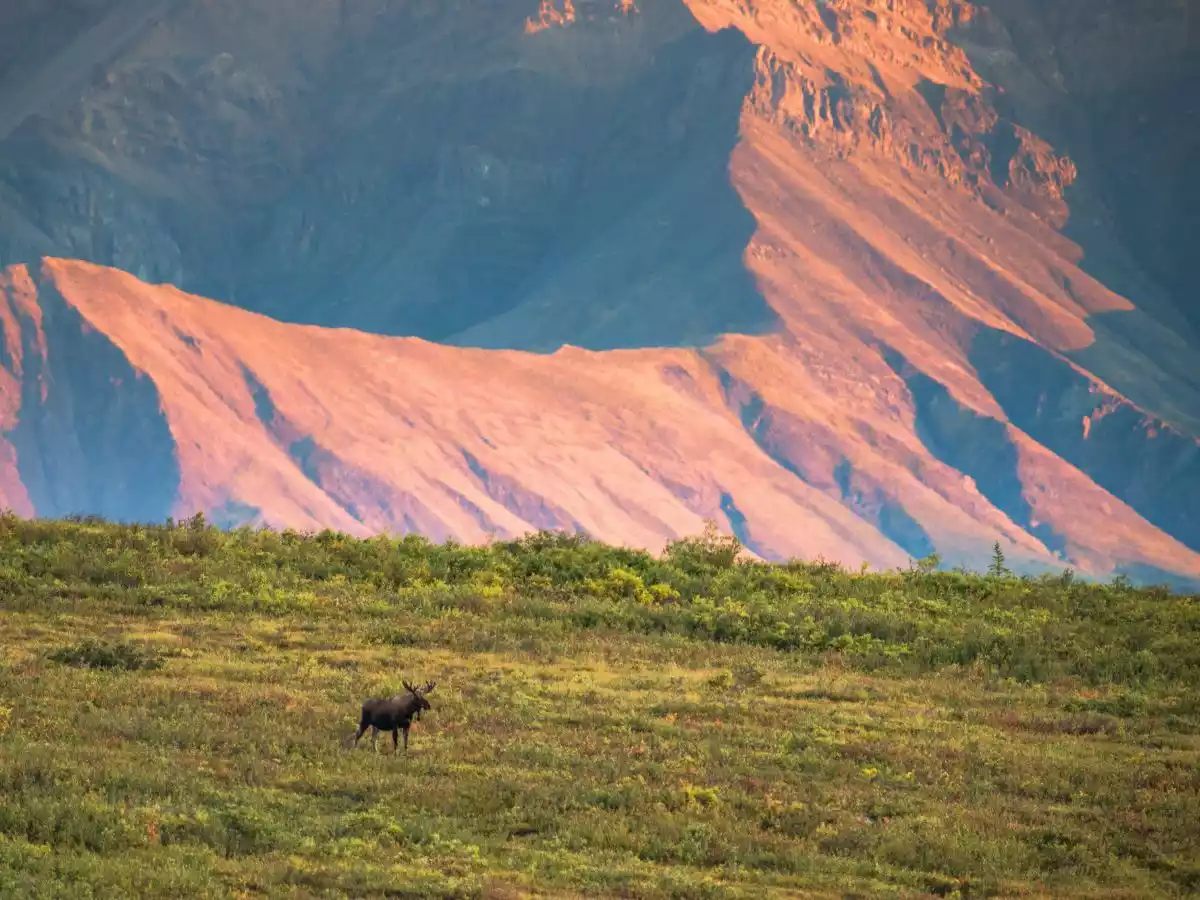 A moose in the vast Denali tundra | Credit: NPS Photo / Kent Miller
A moose in the vast Denali tundra | Credit: NPS Photo / Kent Miller
Denali National Park and Preserve
Denali National Park and Preserve is home to 39 species of mammals and 169 species of birds. So naturally, it's an incredible place to visit to see wildlife. The park is especially known for spotting grizzlies, wolves, and caribou, which all roam the open wilds here.
Personal vehicles are permitted along Denali Park Road — the only road within the park limits — until 'Savage River' at Mile 15. Beyond that, only transit and tour bus traffic is allowed. This presents a remarkable opportunity for animals within the park to flourish far from heavy traffic. And for visitors to get a glimpse of them doing it.
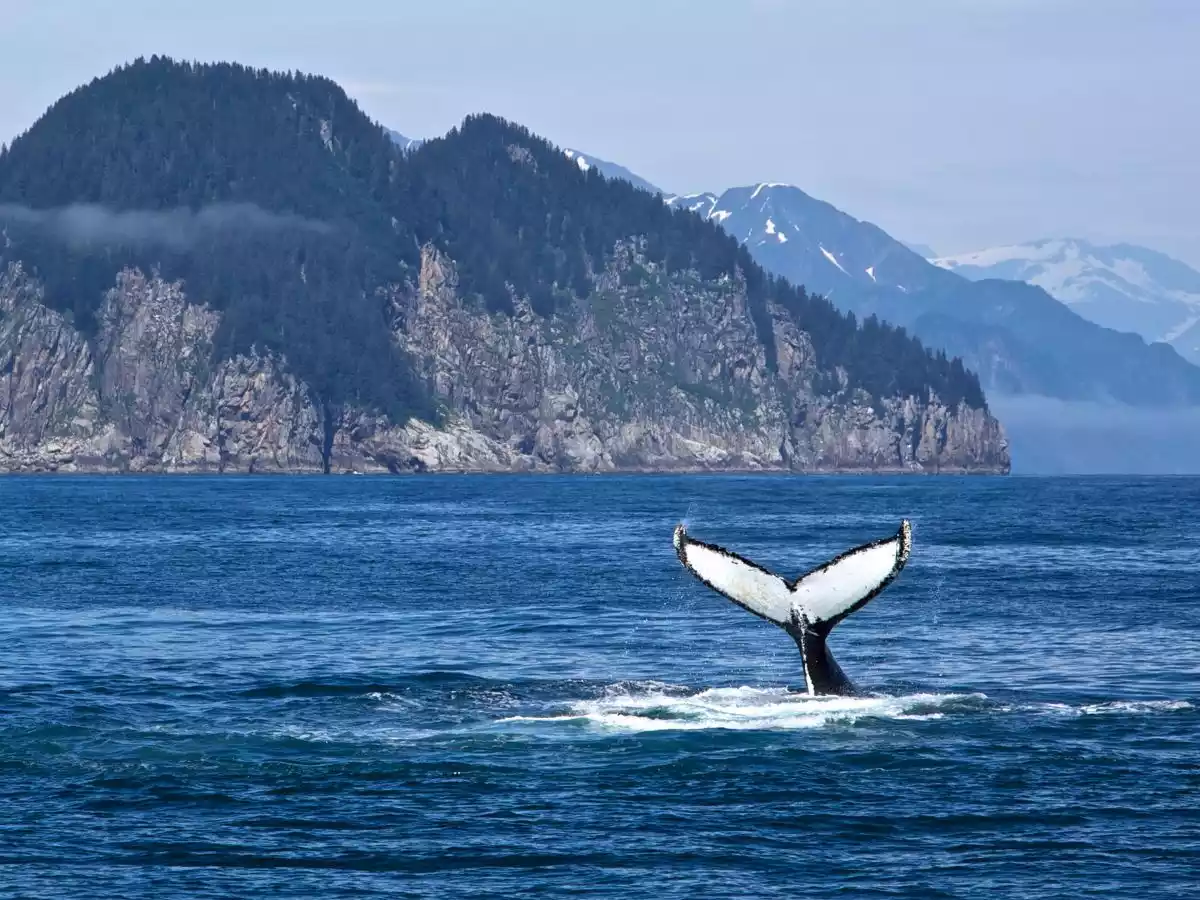 A humpback fluke | Credit: Kenai Fjords Tour
A humpback fluke | Credit: Kenai Fjords Tour
Kenai Fjords National Park
Kenai Fjords National Park is a haven for marine wildlife enthusiasts. Mountains plunge into narrow fjords formed by glaciers, and many still contain them. These protected waters act as a sanctuary to many of Alaska's best-known animals — whales, sea lions, otters, and bald eagles, to name a few. Day cruises through the fjords offer whale watching, otter-spotting, and glacier viewing in equal measures.
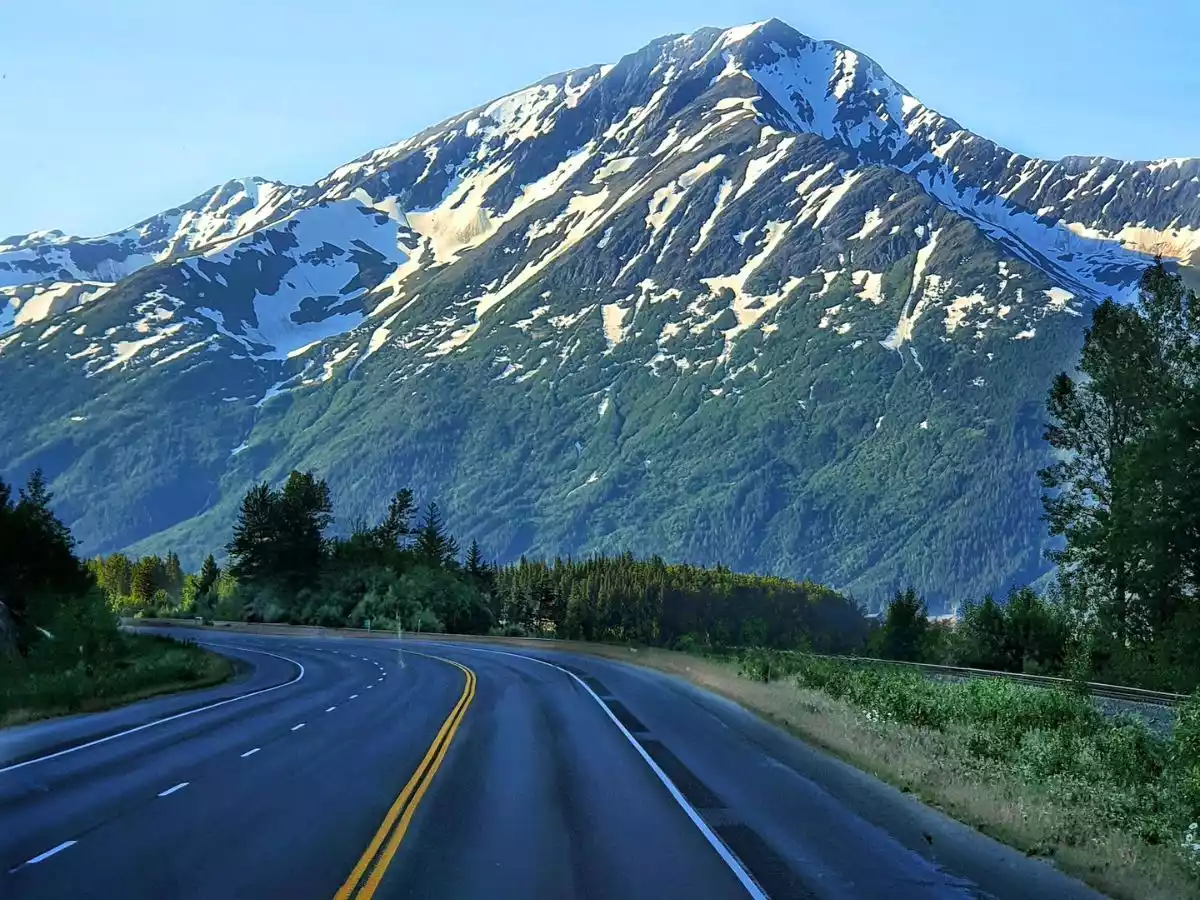 Views along the Seward Highway | Credit: Dr.Vallabh Kulkarni on Unsplash
Views along the Seward Highway | Credit: Dr.Vallabh Kulkarni on Unsplash
The Seward Highway
Following the Turnagain Arm, the Seward Highway is a scenic stretch and designated 'All-American Road' that connects Anchorage to Seward in the Kenai Peninsula.
Beyond its jaw-dropping mountain and shoreline views, moose are known to travel the region, Dall sheep can be spotted at Windy Corner, and the Alaska Wildlife Conservation Center is located just before the turn to Whittier, at the very end of the Turnagain Arm.
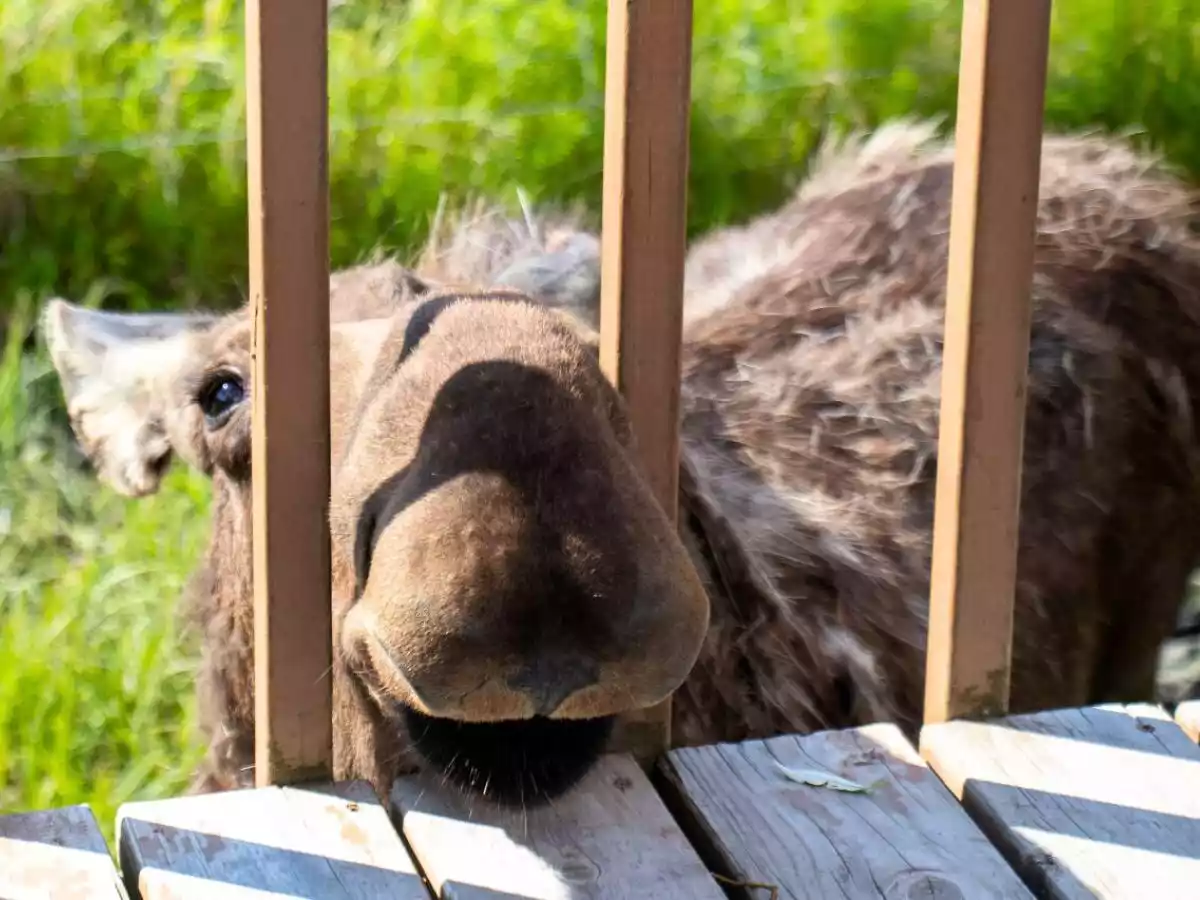 Jo the Moose at the AWCC | Credit: Jane Thompson for AWCC
Jo the Moose at the AWCC | Credit: Jane Thompson for AWCC
Alaska Wildlife Conservation Center
The Alaska Wildlife Conservation Center (AWCC) is a nonprofit animal sanctuary that has over 200 acres of habitat for its resident animals to roam. While providing the incredible opportunity to see many of Alaska's most iconic animals in one place, the center focuses on conservation efforts.
The AWCC gives a permanent home to all manner of Alaskan wildlife — including brown and black bears, moose, coyotes, and lynx — and provides quality animal care given to wildlife that cannot be reintroduced to the wild. The Alaska Department of Fish and Game gives explicit permission for every animal taken in by the AWCC. Travelers can be sure that, by visiting, they are supporting both conservation and ongoing education.
Wildlife-Viewing Packages in Alaska
These are our favorite packages to suggest for seeing Alaskan animals in the wild.
If wildlife viewing is a particular interest to you, mention it to your personal Travel Designer when booking your trip. They can work with you to tailor any of our packages to your interests.
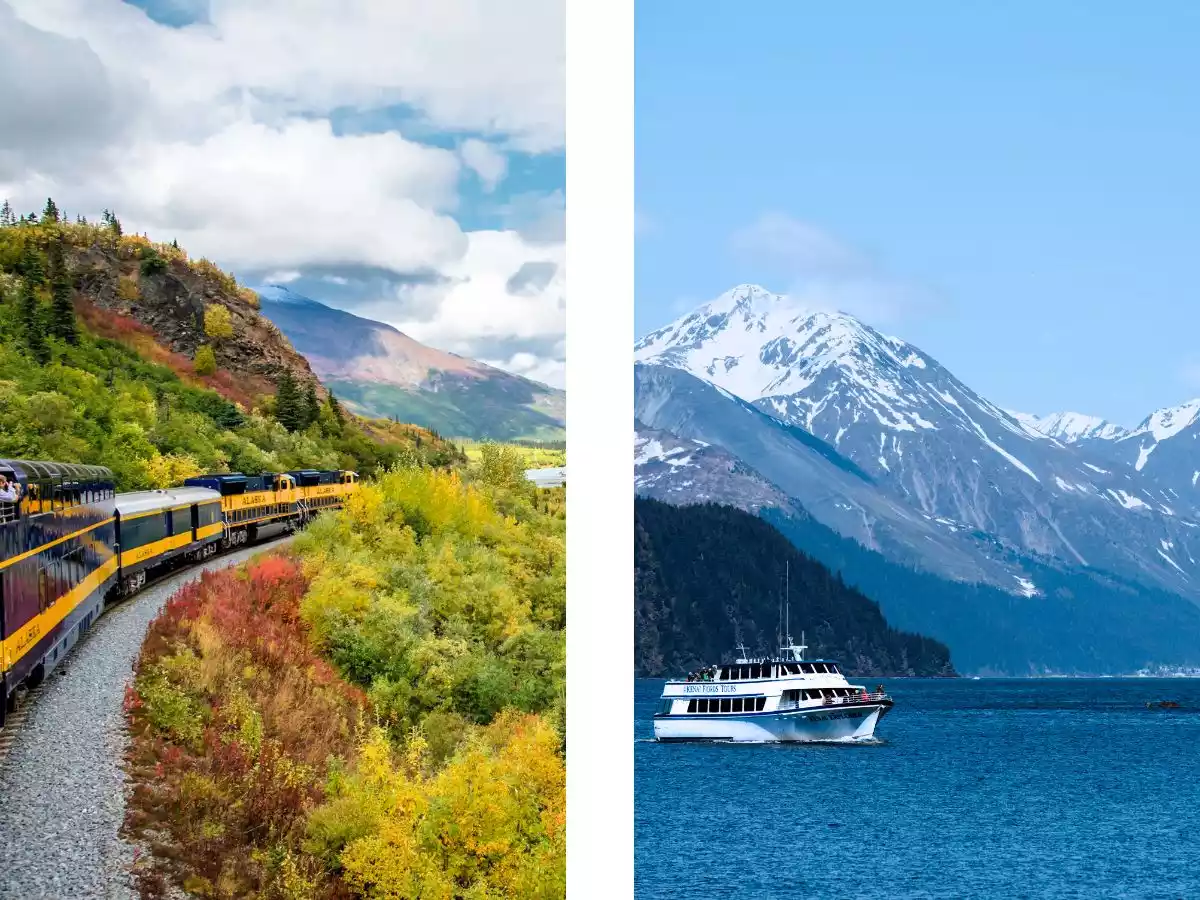 The Alaska Railroad (left) | Credit: Alaska Railroad | The Kenai Fjords day cruise (right) | Credit: Kenai Fjords Tours
The Alaska Railroad (left) | Credit: Alaska Railroad | The Kenai Fjords day cruise (right) | Credit: Kenai Fjords Tours
Signature Alaska Rail Vacation
Fly-in Bear Viewing | Alaska Wildlife Conservation Center | Kenai Fjords Cruise | Denali Tundra Wilderness Tour
Journeying Alaska by train, you gain access to remote backcountry where animals roam free from human intervention.
Our Signature Alaska Rail Vacation tour includes a fly-in bear viewing excursion, Kenai Fjords cruise, and admission to the Alaska Wildlife Conservation Center by default. But, to maximize wildlife-viewing opportunities, we recommend including the Denali Tundra Wilderness Tour (at no extra cost). There, venture far beyond private traffic in Denali National Park, and find the animals living within.
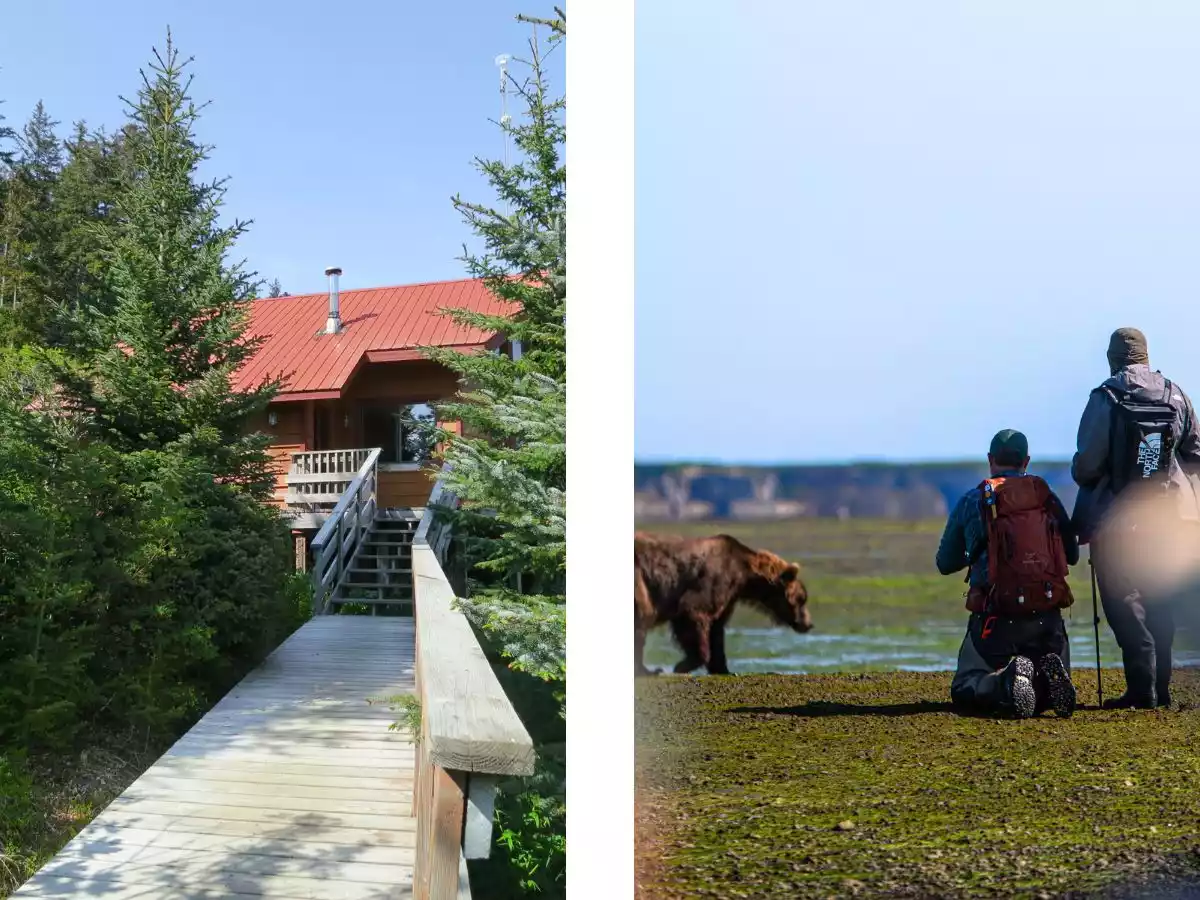 Tutka Bay Lodge (left) and a bear-viewing tour run by the lodge (right) | Credit: Tutka Bay Lodge
Tutka Bay Lodge (left) and a bear-viewing tour run by the lodge (right) | Credit: Tutka Bay Lodge
Tutka Bay Lodge | Alaska Luxury Wilderness Lodge
Fly-in Bear Viewing | Marine Wildlife Cruise | Deep-Sea Fishing | Bird Watching | Tidal Exploration
Tutka Bay Lodge is a luxury boutique lodge perched on the edge of Kachemak Bay and Tutka Bay, far from large human populations, and perfectly positioned for prime wildlife viewing and fishing opportunities. It is one of the best Alaska lodges for wilderness escapes, and to see what awaits beyond the beaten path.
Beyond staying at a lodge entirely immersed in the wilderness, you are treated to daily excursions into the surrounding wilds. Each centers around the nature that inhabits it and is tailored to your interests. This means you're free to follow what speaks to you most and spend time doing what matters.
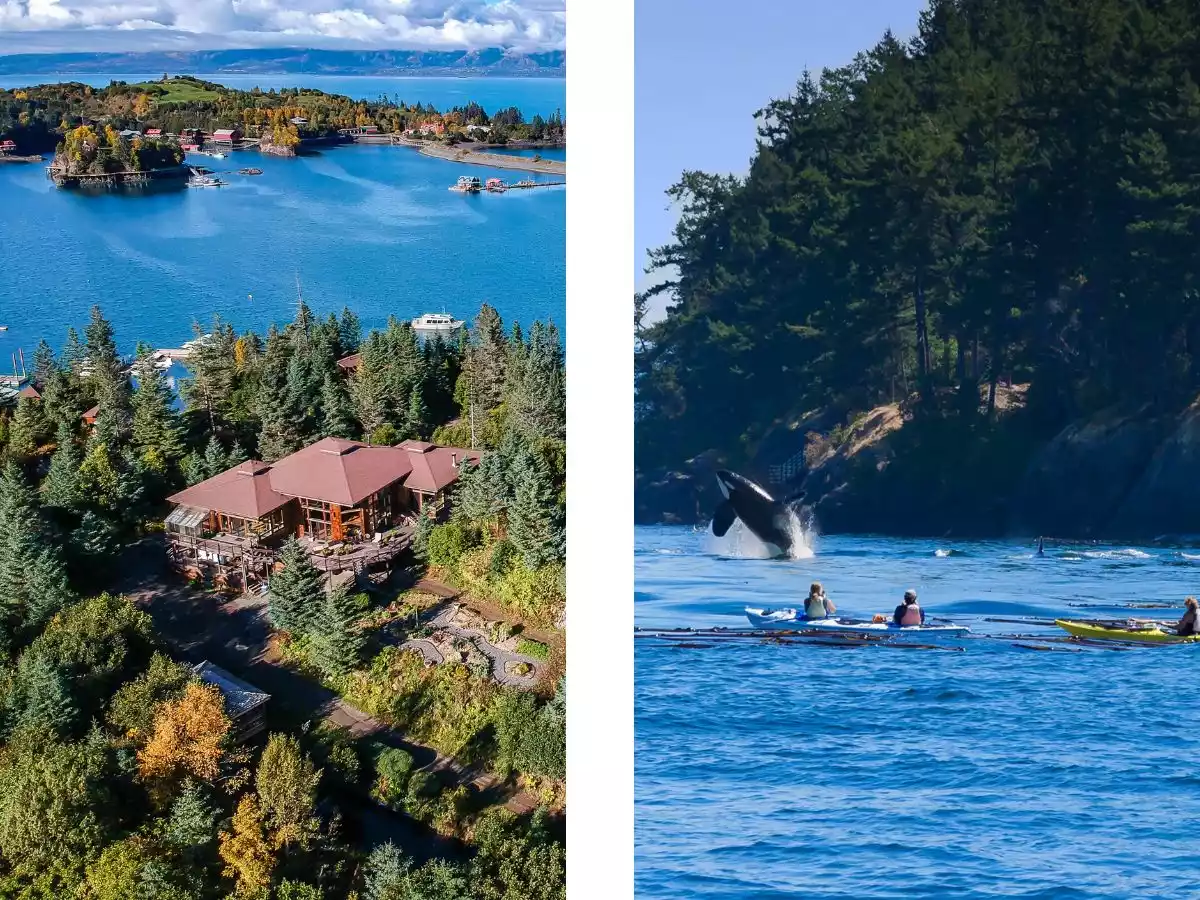 Stillpoint Lodge (left) and a kayak trip’s orca sighting (right) | Credit: Stillpoint Lodge
Stillpoint Lodge (left) and a kayak trip’s orca sighting (right) | Credit: Stillpoint Lodge
Stillpoint Lodge | Alaska Luxury Wilderness Lodge
Fly-in Bear Viewing | Wildlife Boat Photo-Safari | Saltwater Fishing | Bird watching
In Halibut Cove near Anchorage, you'll find Stillpoint Lodge, where you are welcomed to nature in luxury. Here, you can take boats across Kachemak Bay to go whale watching and visit an island seabird sanctuary, fly out to a bear viewing spot, fish for salmon or halibut on the bay, or hike the backcountry alongside a local guide to see what you can find. And, while your days revolve around uncovering the Alaskan wilds, your evenings and nights are spent in luxury. The nightly happy hour hors d’oeuvres and four-course dinner are an indulgent addition to your stay.
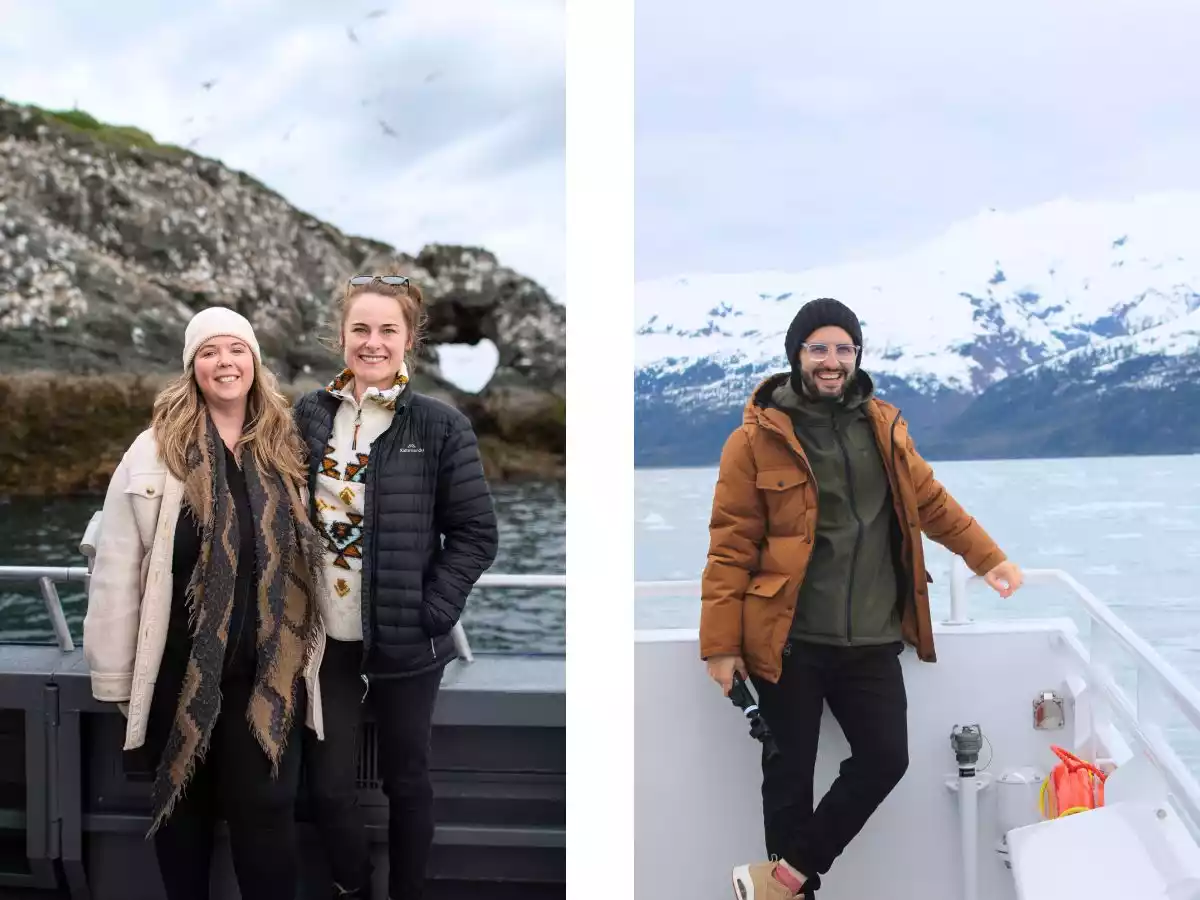 Our Alaska Rail Vacations team traveling Alaska | Credit: Alaska Rail Vacations
Our Alaska Rail Vacations team traveling Alaska | Credit: Alaska Rail Vacations
Book Today with Alaska Rail Vacations
Reach out to a Travel Designer to begin planning your bespoke trip to Alaska. With expert insight into the animals that wander the state and how to see them best, they will work with you to tailor your favorite package for wildlife viewing or create an entirely unique one just for you.
For more travel inspiration, subscribe to our newsletter. There, you'll find travel tips and tricks, our favorite package picks, and all our best deals.
Conservation and Preserving Alaska's Wildlife
Preserving Alaska's wildlife is of the utmost importance for its future and is upheld in several ways.
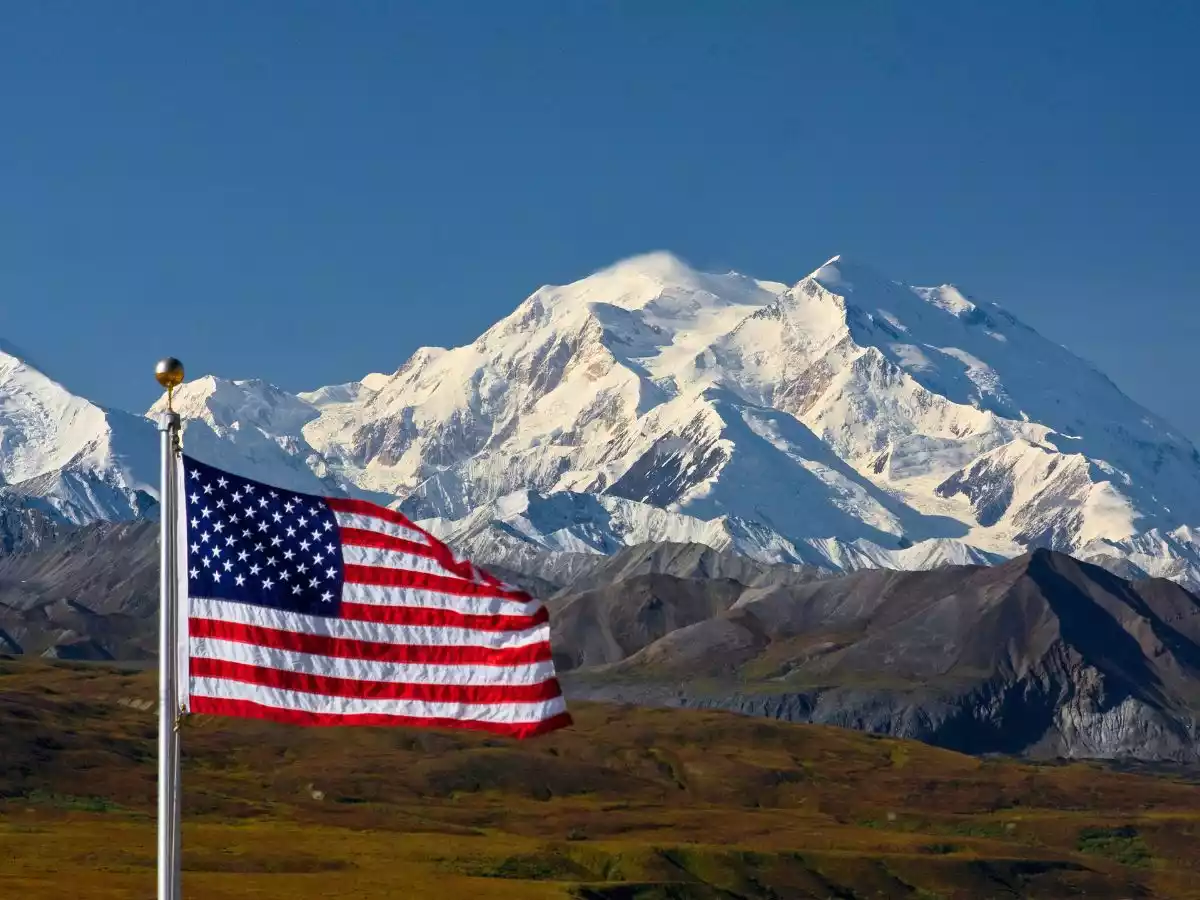 Mount Denali | Credit: NPS Photo
Mount Denali | Credit: NPS Photo
US National Park Service
The US National Park Service protects the lands that make up national parks and preserves Alaska's wildlife within them. National parks provide large, unfenced lands that are vital to animal welfare, allowing wildlife to live as it always has, with minimal impact from humans.
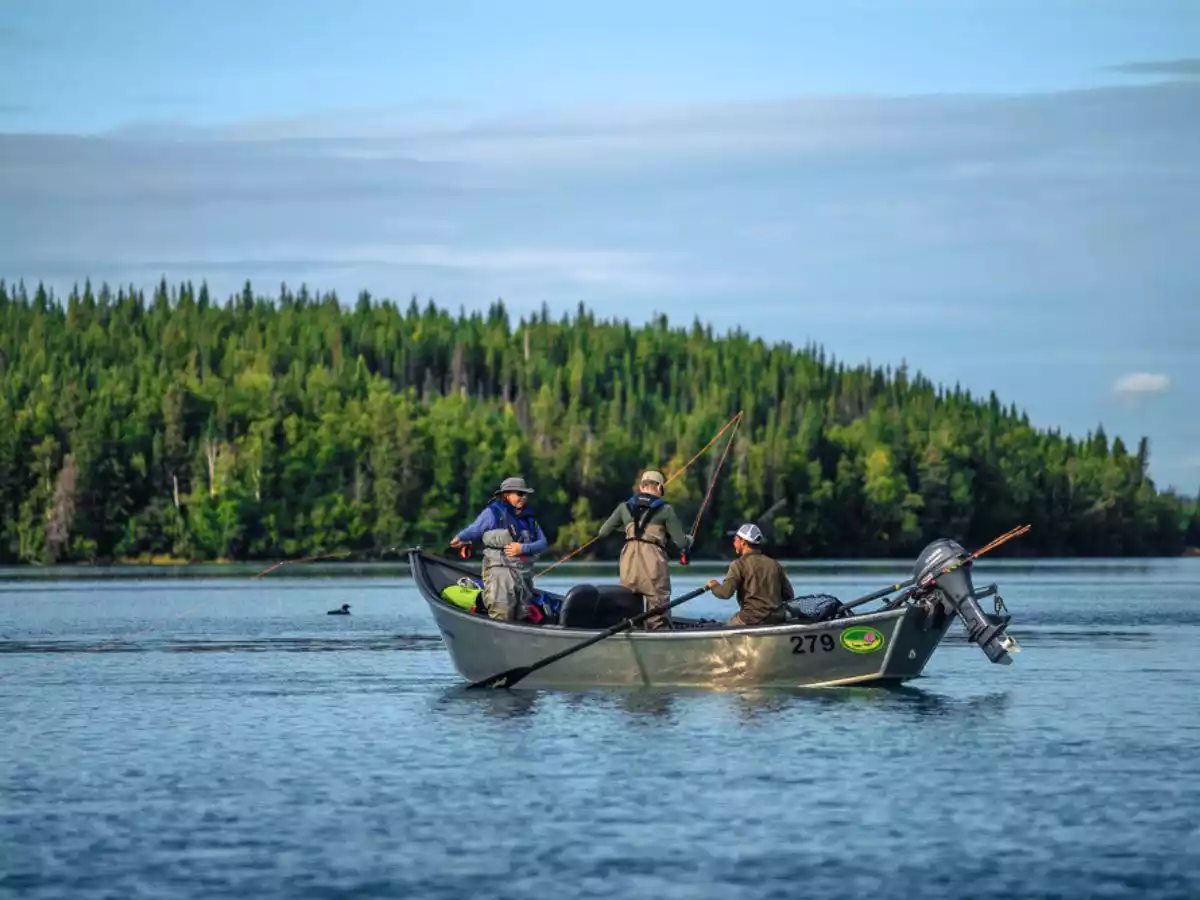 A fishing tour on the Kenai River | Credit: Kenai River Drifter’s Lodge
A fishing tour on the Kenai River | Credit: Kenai River Drifter’s Lodge
Alaska Department of Fish and Game
The Alaska Department of Fish and Game exists to protect, maintain, and improve Alaskan wildlife. This includes regulating hunting, managing commercial fishing, and improving public education.
They work with not-for-profit organizations like the Alaska Wildlife Conservation Center in restoration and conservation efforts. Perhaps most notably, the Alaska Department of Fish and Game worked with the AWCC to successfully reintroduce 130 wood bison into the wild, downlisting their status from 'endangered,' a far cry from being declared 'extinct' in 1941.
FAQs
What kind of wildlife does Alaska have?
Wildlife in Alaska can be categorized into animals to see and recreational fishing.
Visitors' favorite animals for wildlife viewing are the 'big five' — bears, moose, caribou, Dall sheep, and wolves — aquatic animals like whales, porpoises, and seals; and many like deer and mountain goats.
The other main reason people visit Alaska for wildlife is for fishing, and they will find plentiful opportunities to fish for salmon, halibut, and trout across the state.
What month is the best time to see wildlife in Alaska?
The best month to visit Alaska to see wildlife depends on what wildlife you would like to see. For general wildlife viewing opportunities, we recommend a trip in late summer or very early fall, when there is the largest variety of wildlife visible.
The best month by animal is:
- Bears — July to September
- Moose — September and October
- Caribou — September
- Dall sheep — May to June
- Wolves — year-round
- Whales — May to September
- Fishing — May to September (depending on fish species)
What is the largest wildlife in Alaska?
The largest wildlife seen in Alaska is the humpback whale, which is seen in the ocean surrounding the state and can reach 60 feet in length. On the other hand, the largest land animals seen are wood bison, which can weigh up to 2400 pounds and stand to nearly 6 feet tall. Brown bears, while the largest land carnivores in North America, are still significantly smaller than a bison.
Table of Contents
- In Short
- What are Alaska's 'Big Five' Wildlife
- Bears
- Moose
- Caribou (and Reindeer)
- Dall Sheep
- Wolves
- Other Wildlife to See in Alaska
- Whales
- Sea Otters, Sea Lions, and Seals
- Bald Eagles and Birds
- Deer and Elk
- Bison
- Lynx
- Small Mammals
- Fish
- Best Places to See Wildlife in Alaska
- Denali National Park and Preserve
- Kenai Fjords National Park
- The Seward Highway
- Alaska Wildlife Conservation Center
- Wildlife-Viewing Packages in Alaska
- Signature Alaska Rail Vacation
- Tutka Bay Lodge | Alaska Luxury Wilderness Lodge
- Stillpoint Lodge | Alaska Luxury Wilderness Lodge
- Book Today with Alaska Rail Vacations
- Conservation and Preserving Alaska's Wildlife
- US National Park Service
- Alaska Department of Fish and Game
- FAQs
- What kind of wildlife does Alaska have?
- What month is the best time to see wildlife in Alaska?
- What is the largest wildlife in Alaska?
